Ultimate Reef


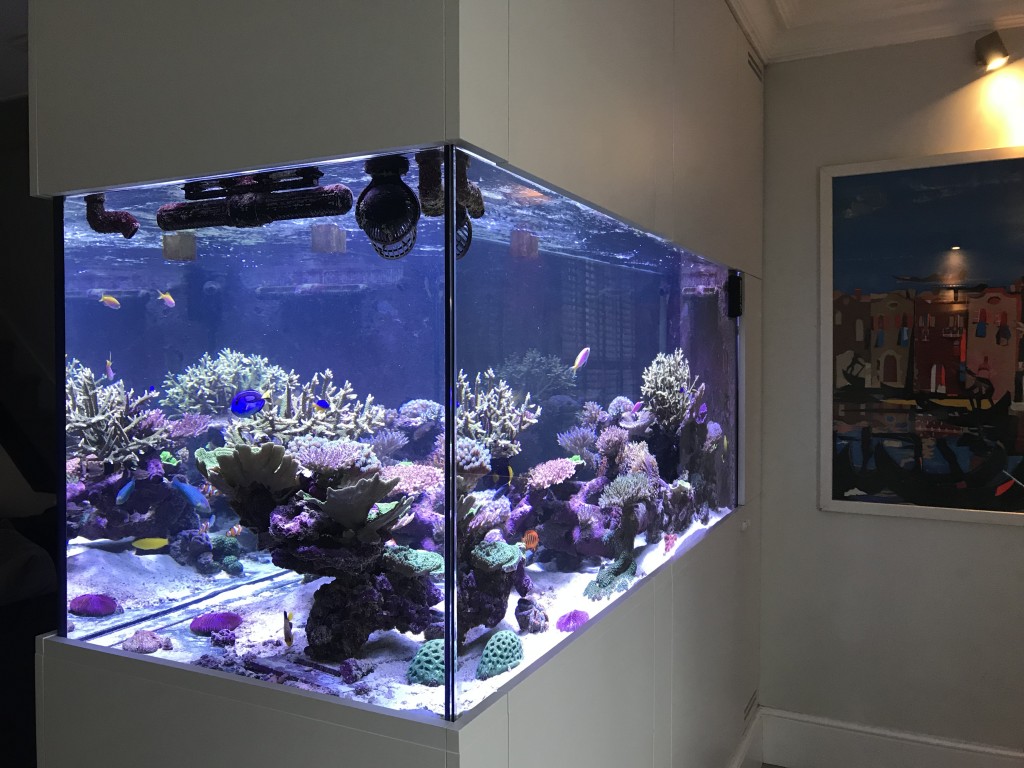
I was completely taken by surprise when a few weeks back I received a message in my inbox asking me whether I would be interested in having my tank featured as TOTM! It is truly a great honour and I would like to thank the UR team and anyone who was involved in the process, especially since I rarely have the time to be very active on the forum due to a young family, long working hours, and spending most of my free time fiddling with my tank!
My reefing journey, or better addiction, began more than 30 years ago when I was about 9 years old and walked into a pet shop in Italy with my father to buy some dog food, and there at the entrance was a small marine tank with a couple of clownfish. I was instantly hooked and from that day on kept begging my parents to have a fish tank. I spent the next couple of years (with the help of my parents) scouring bookshops and libraries for marine fish keeping guides and doing in-depth research on the subject to convince them I was ready to take care of living animals. This was in the mid 80's and at the time there were few books around, but I got hold of a few bibles sunch as Frank de Graaf's Marine Tropical Aquarium Guide, Horst & Kipper's The Optimum Marine Aquarium, and later Martin Moe's Marine Aquarium Reference: Systems and Invertebrates. This went on for a few years until my parents finally realised I was serious, would not give up, and had done enough research. I will never forget when I came home from school on my 12th birthday and there was a small tank cycling in my bedroom with an undergravel filter, white coral skeletons as decoration (some may still remember those days...), and some Tetra test kits at hand; and how several weeks later we went to get my first clownfish. To this day I will never forget how supportive my parents have been in nurturing my passion, especially my late father. In many ways, my reef keeping is also a tribute to him.
Fast forward 30 years from when I first kept reef tanks growing up in Italy (mainly soft corals and macroalgae - Dutch reef style), then living in the US and having my first full-blown SPS tank (and suffering a heart-breaking total loss during the 3 day black-out in New York in 2003), and for the last 12 years in the UK. My latest incarnation, the Triton Pacific Reef, is the result of breaking down my old Elos 200 gallon Maldivian Biotope and donating most of my livestock and some very large colonies to the Horniman Museum, and going through a major house renovation.
The current set-up was started in August 2016, and major credit goes to Vince at Aquarium Connections and Charterhouse Aquatics for the design and build of the system, which is second to none. Vince also helped me with the amazing aquascape using a combination of very large Reef Bones and Real Reef Rock, seeded with the odd live Tonga Branch. Similarly to my old Maldivian biotope, the tank has been set up with the intent of trying to recreate an Australian Great Barrier Reef biotope as closely as possible, both in terms of corals, as well as fish and invertebrates. That said, over time a few concessions have been made with regards to inverts used as pest control and algae prevention (i.e. peppermint shrimp, mexican turbos), and a single colony of Montipora Setosa which was an impulse buy I could not resist. The rest is pretty much in line, though in reality on a small patch of reef or reef bommie you are far more likely to see 3 or 4 different and very large SPS colonies with a few LPS or soft corals, rather than our home reefs with 30-50 different coral types. In fact, over time as my corals have been growing, I have been slowly removing some to eventually end up with a few very large colonies and a more natural look. My old Maldivian reef is an example.
The system was ordered through Charterhouse and was built by Vince from Aquarium Connections.
Main Display: 185cm x 80cm x 85cm
Custom Triton Configured Sump: 140cm x 70cm x 38cm
Total system volume approx. 1400L
Method: Triton with Core 7 Solutions
Having kept marines since I was 13 years old and having tried various methods along the way from the old school trickle filter, to Berlin with calcium reactor and kalkwasser, to Berlin with Balling, Refugium, and regular water changes, I wanted to try something different and easy to maintain. I also have a young family, so ease of maintenance was an absolute priority for me.
The Triton Core 7 seemed to tick a lot of boxes, especially since the solutions last for a long time. In my last tank the FM Balling Salt consumption was so high that I was mixing 10 litres of balling solutions every couple of weeks which became a real hassle, let alone the bi-weekly water changes, despite a semi-automatic water change system I had designed.
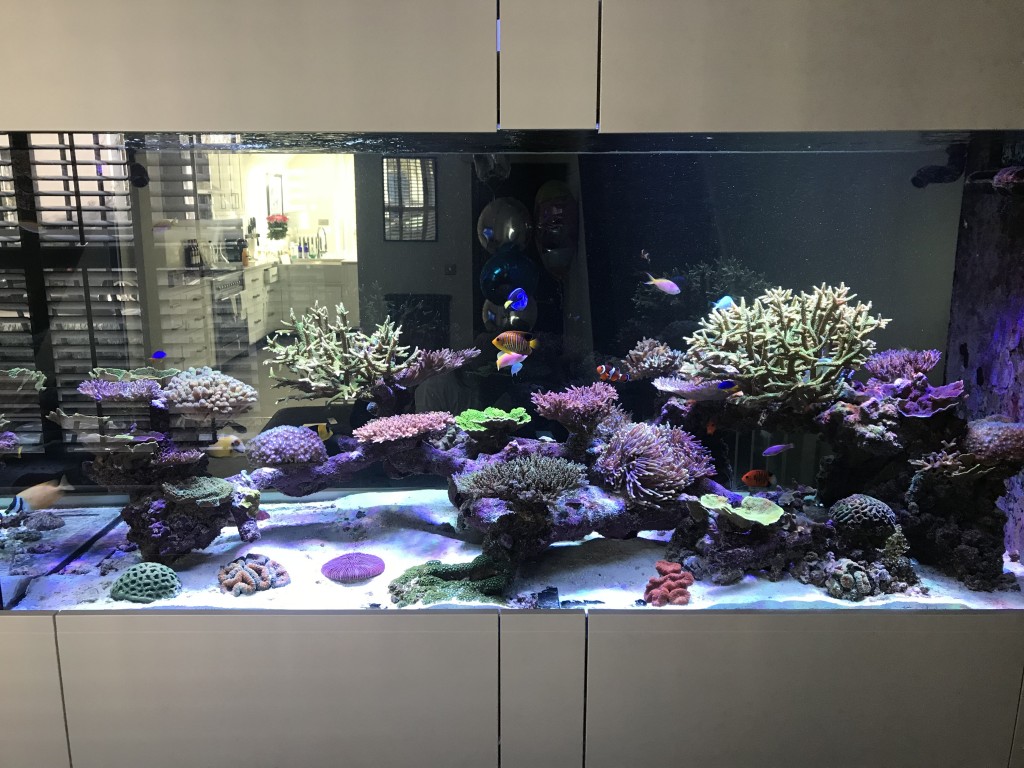
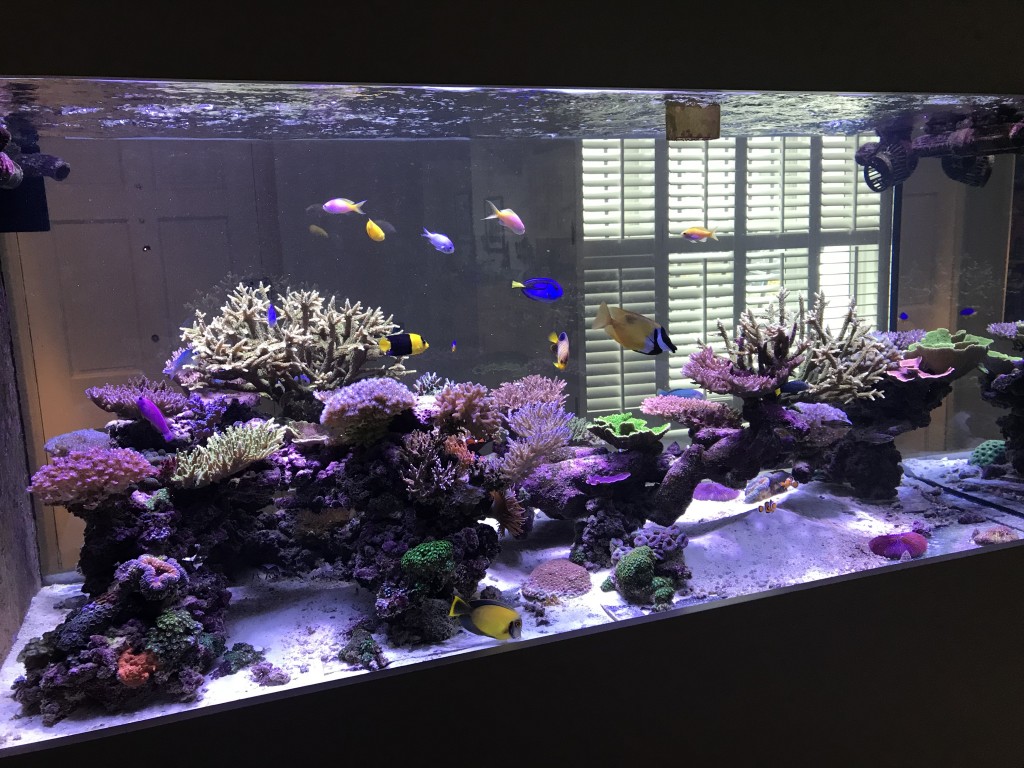
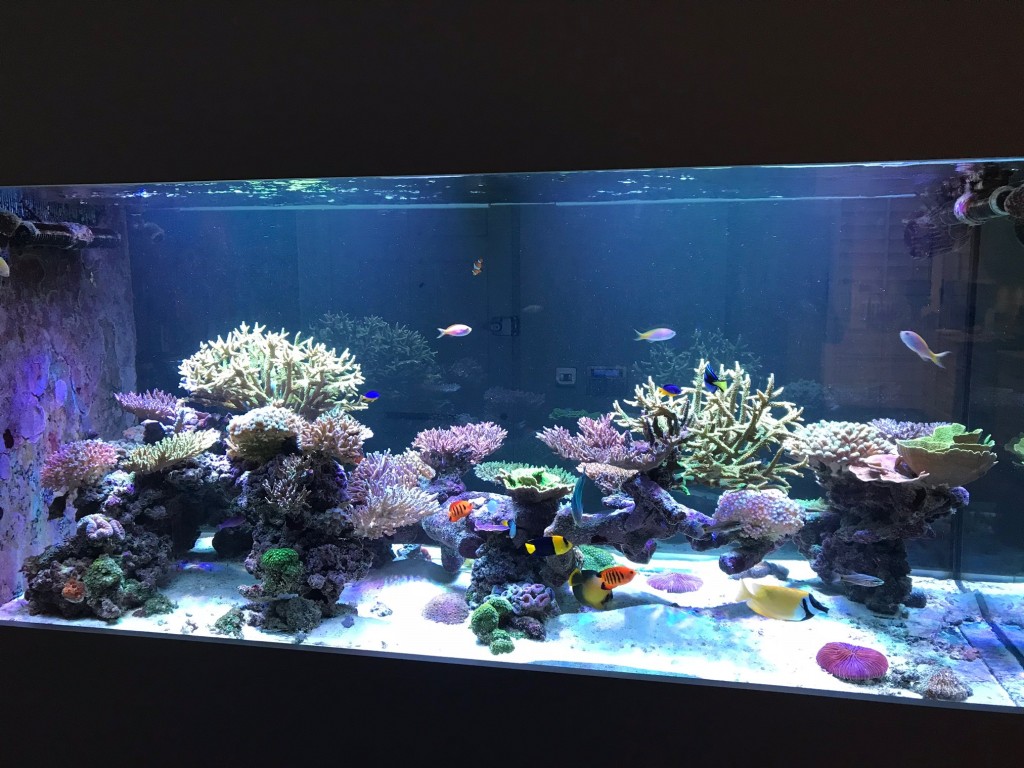
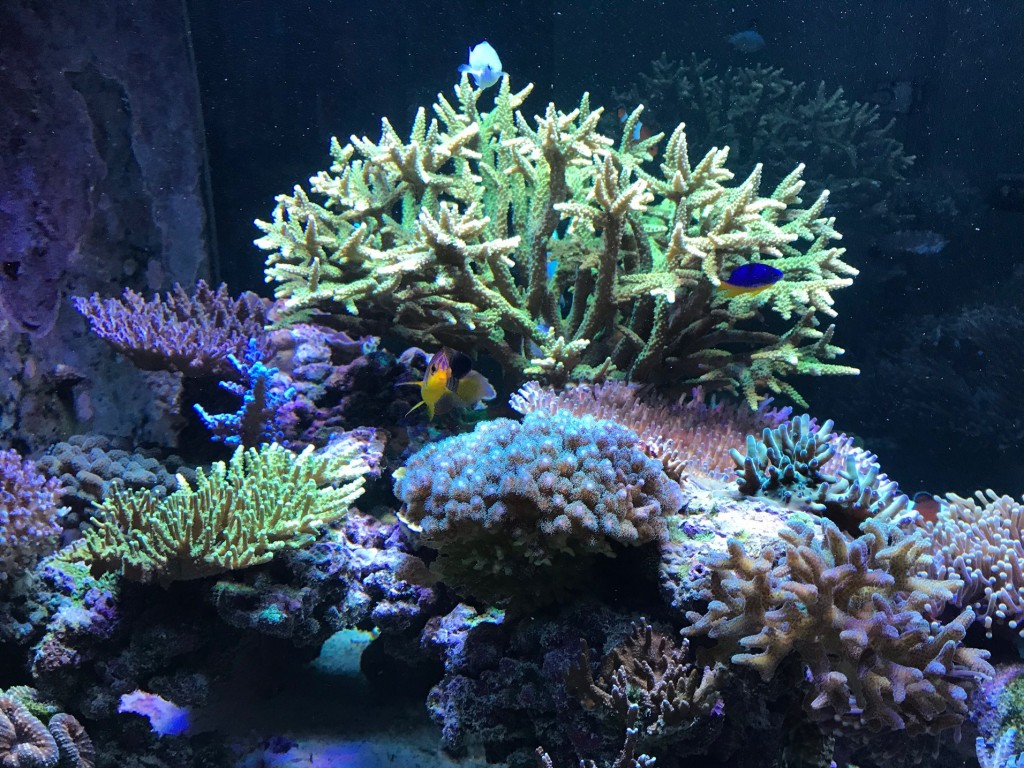
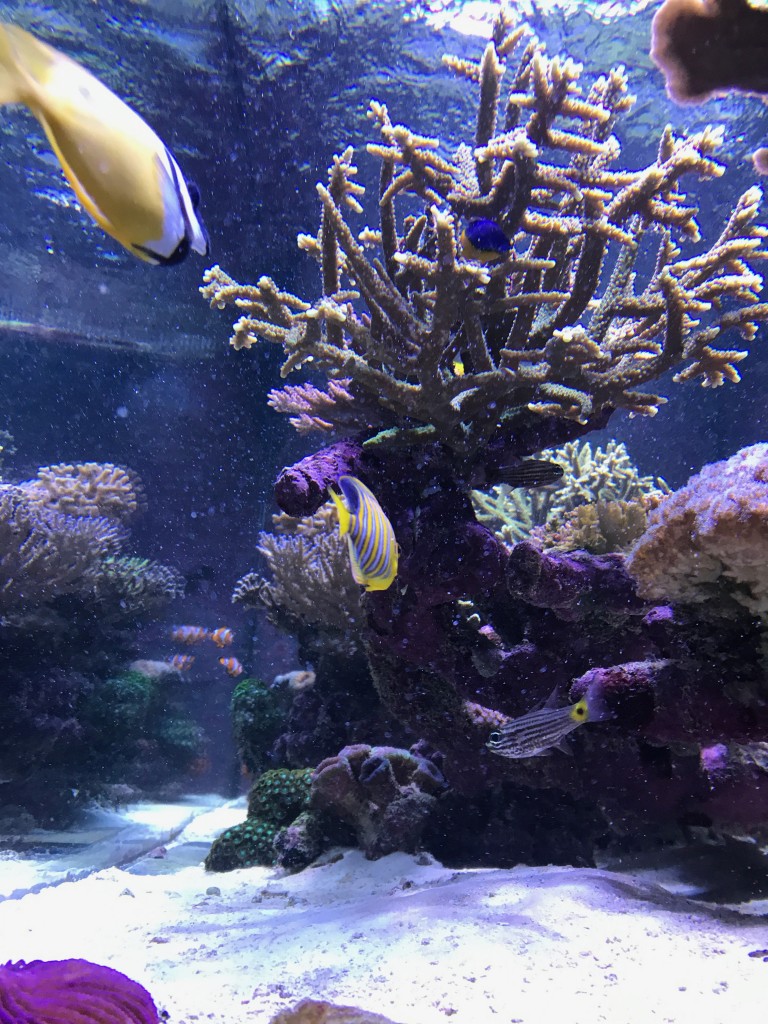
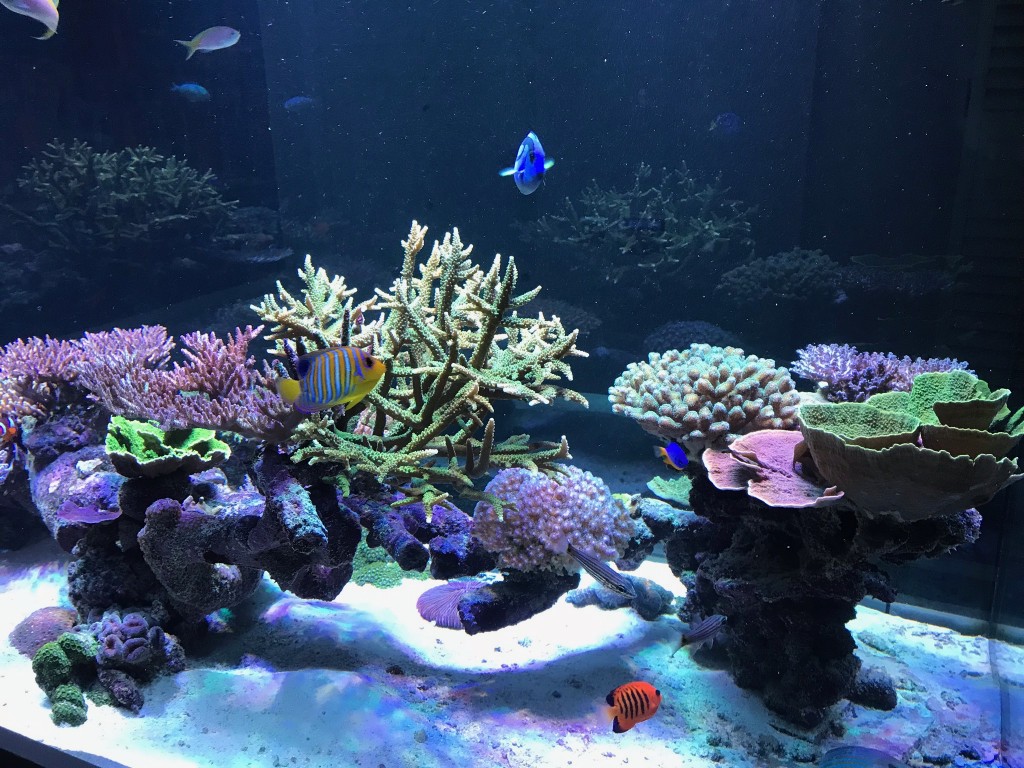

In the past I have always used Metal Halides supplemented by T5s, but this time I was keen to try out LEDs for less heat dispersion, greater efficiency, and most of all controllability.
For the main tank I was recommeneded the Angel A1P leds, as Vince had them on his display tank at home at the time, and I had also received positive feedback from another UR member who was using them.
I have had the lights running for the last 2 years and have been very pleased with the spectrum and colour rendition, which is the most similar I have seen to a MH bulb. The growth has also been superb, but that said, I have also had my issues with the lights. Namely, a diffult to use control function due to the very temperamental wifi connection, as well as the usual shading issues prevalent with most LED pendants. I therefore ended up using the 12K pre-set function and a set and forget approach which has worked very well and gives the tank an incredibly natural look. I would also mention that the top quality Mean Well power supplies run very hot and given that they are housed in an enclosure above the lights, I might as well have gone for metal halides, though I don't miss having to change bulbs every 9-12 months.
Anyway, I have recently decided to upgrade my lights to the Orphek Atlantik V4's which I ordered a couple of months ago and are now sitting at home and just waiting to be installed. I am very curious to see how these will pan out as reviews also from other UR members have been very promising so far.
For the refugium, I am using an 8 x 39W ATI Sunpower T5 pendant, retrofitted with Euroquatics E5 LED warm white and 12k Lamps. This has been a great decision as the lights have been running without fault and with no need to change them for the next few years, after initial issues when I was using a low cost Wavepoint pendant which caused overheating and burnout even for the E5 LED lamps.
I am a big believer in having lots of flow in a tank. Through the years I have observed that SPS corals, especially staghorns, tend to grow much thicker and in a denser formation when they are subjected to strong random flow. Random is also key, because if the flow is very one directional, then over time the corals will grow in a pattern that reflects the direction of the flow, and can make them look unnatural.
For Circulation I am currently using two Maxspect Gyre 250s on each end of the tank with a custom program I have put together which changes the type of flow every hour. I usually run each of the pumps at 100% (except for the random flow mode). I have found the flow in the tank to work very well.
More recently I have also added a Tunze Turbelle 6255 (I also have another one but it needs to be fixed), which intermittently comes on every few hours on wave mode.
Lastly, and this is key, I have also connected one of the gyres to 4 Coral Box battery back-ups set up in series (they are identical to the ICECAP ones in the US). This will supply redundancy power for approximately 48 hours in the event of a blackout, something I have experienced first hand when I lost a full-blown SPS tank while living in New York during a 3 day blackout in 2003.
The back-ups were ordered from Fishstreet and they come with an array of different connectors that will fit most of the DC flow pumps on the market.
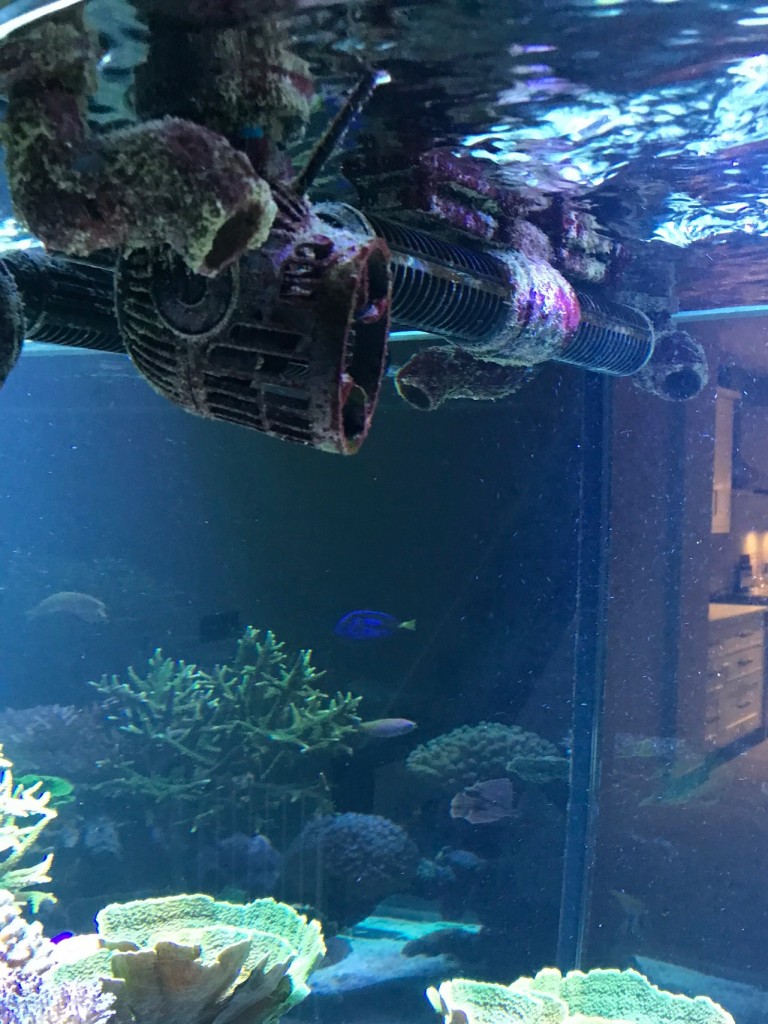
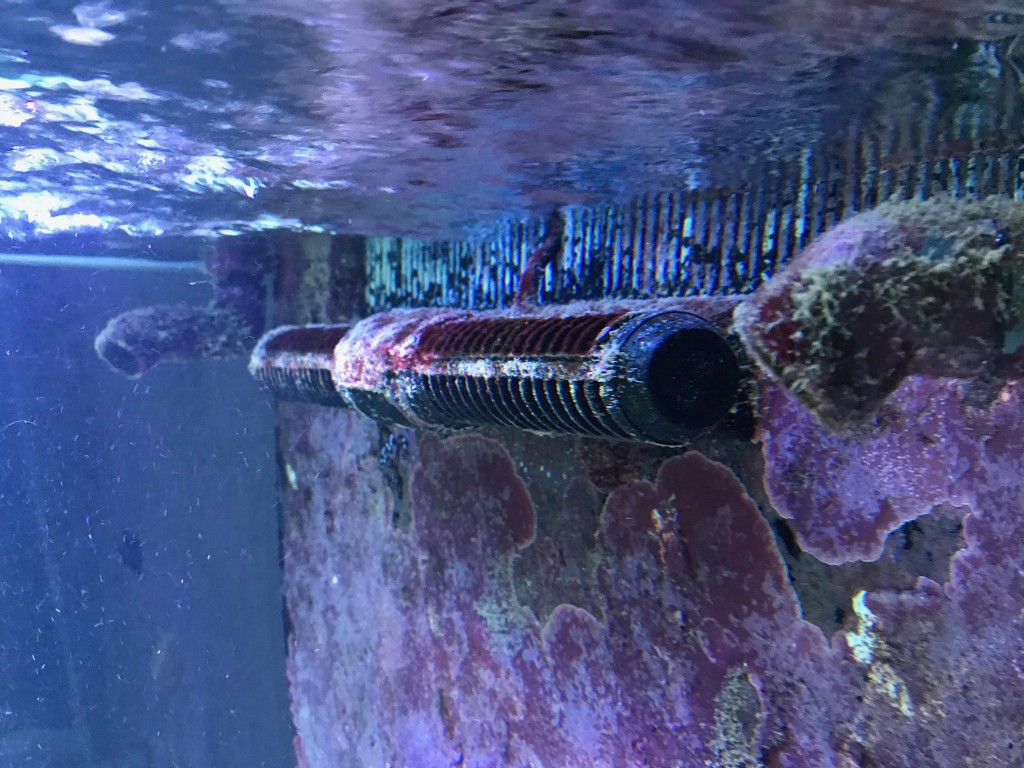
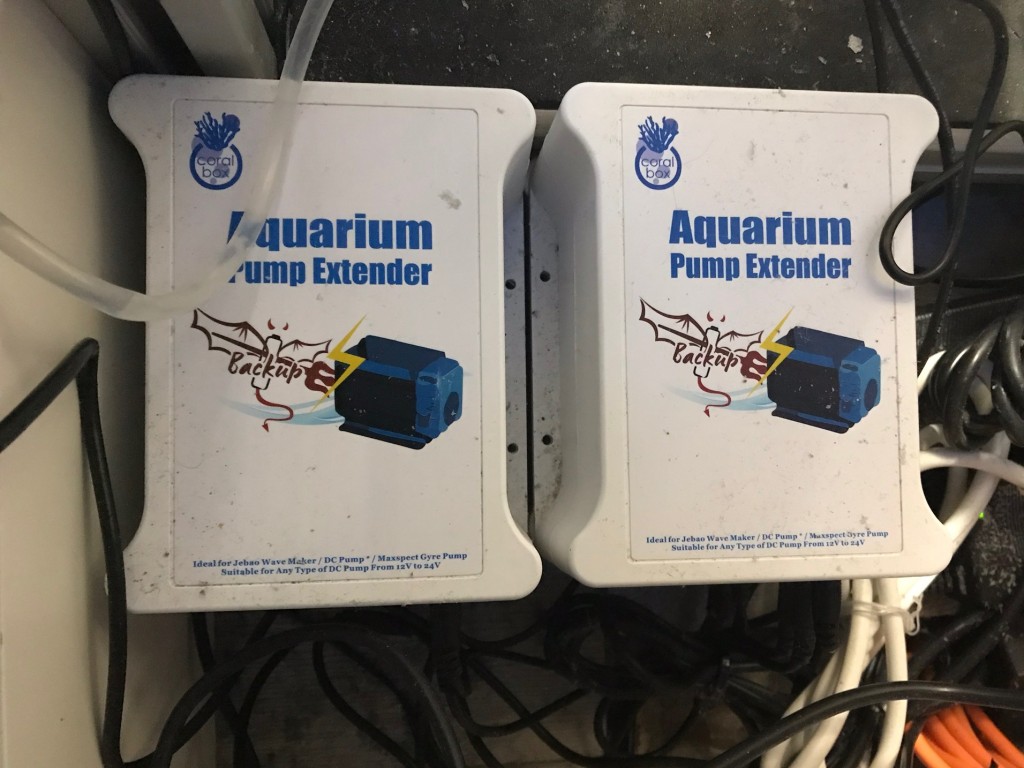
I run the tank at a temperature of 27.0C which is slightly higher than most people. I do this because having done a lot of snorkelling and diving in various reef lagoons around the world, I have always found the temperature to be higher in shallow waters, which is what I am trying to recreate. I am also doing it to get my corals used to higher tempreatures just in case my chiller fails during a rare summer heatwave.
Heating/Chilling is run by a Simply Aquaria dual temp controller, connected to a Schego 600W Titanium heater and a Teco TK2000 Chiller.
Filtration is carried out exactly as recommended by Triton as follows:
- Refugium (about 12% of tank volume) with a dense bed of Chaeto which has outcompeted all other macroalgae I started with (mainly various caulerpa species)
- Skimming through two Ultra Reef Akula 200 skimmers (having had a Bubble King in the past, I would rate the build quality just as high but for half the price)
- Carbon reactor with approximately 300ml of Triton Carbon changed once a month
- Phosphate reactor with approximately 300ml of AL99 media changed every 2 weeks
I have also just added a Clarisea SK5000 auto filter roll a few days ago, as I was getting a lot of detritus build up in the refugium, so will be interesting to see how that works out.

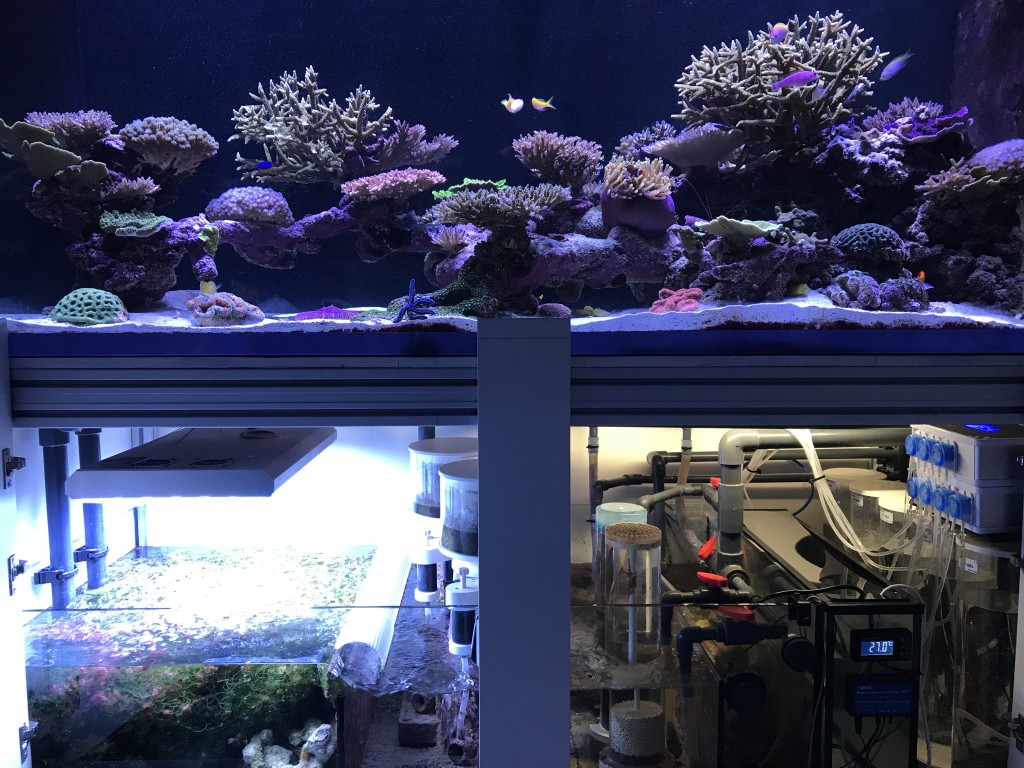
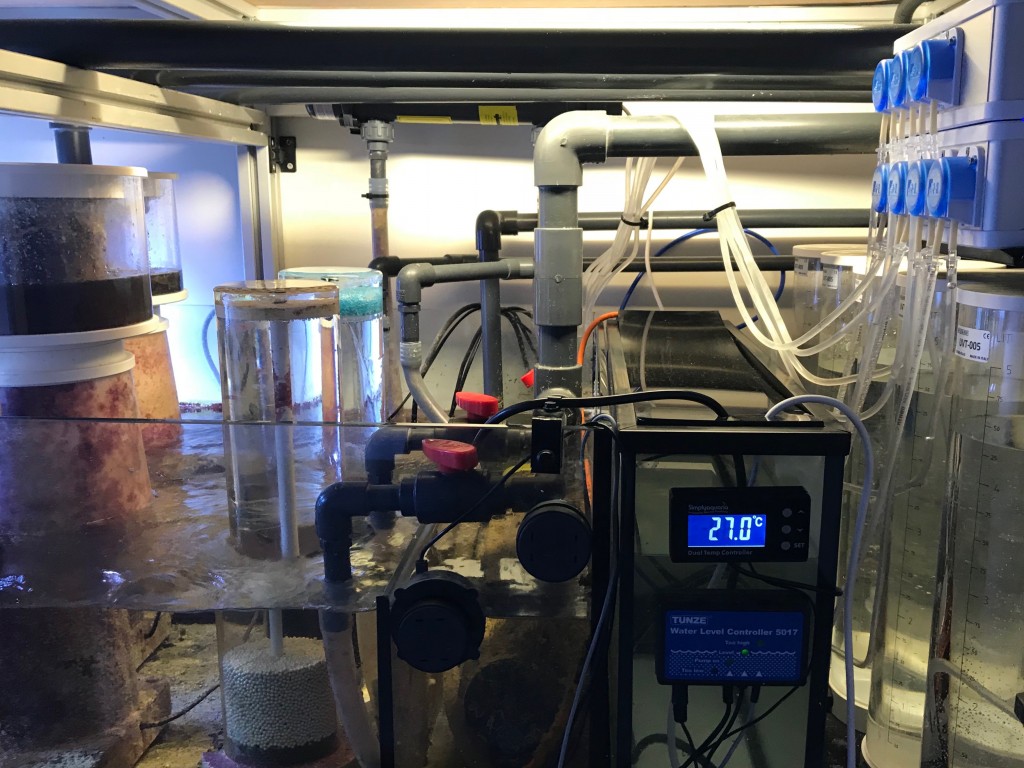
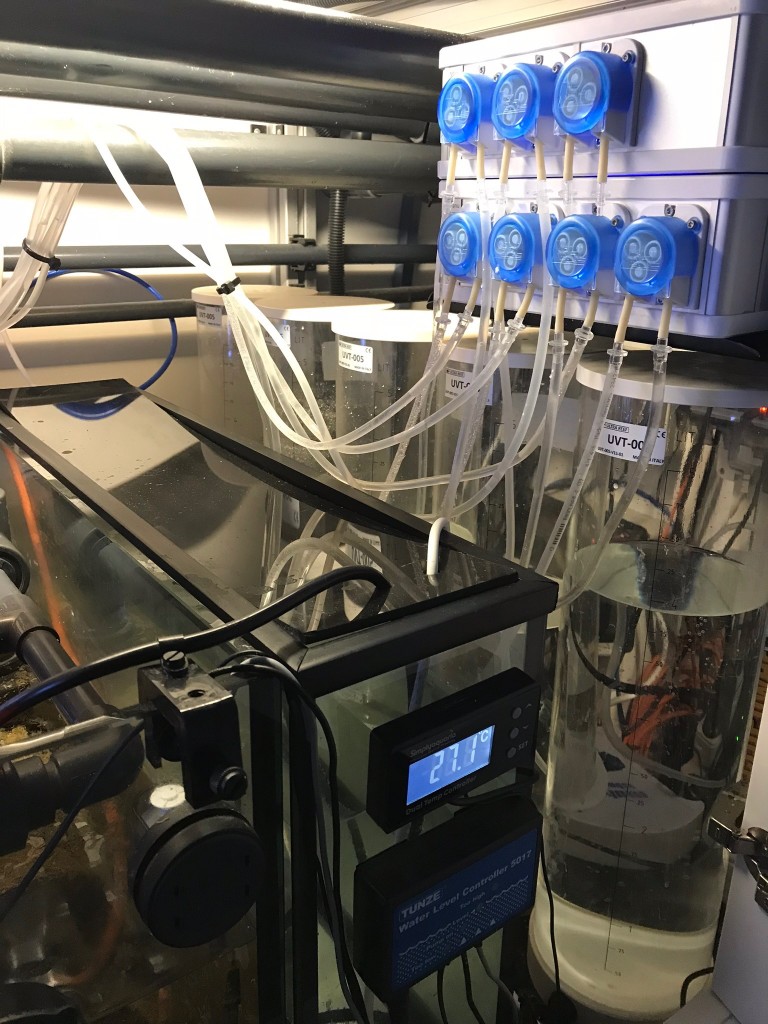
Over my 30 years of reefkeeping I have tried many different methods and combinations of supplementation, including:
Regular Water Changes
Calcium Reactor
Kalkwasser Supplementation
Balling
As mentioned earlier, I was very keen to find a simple, low maintenance, and stable method of supplementation. After much research I decided to take the plunge and started this tank using the Triton Core 7 method. I was very attracted by the positive experiences many have had using this method, especially since it is based on no water changes, and no mixing of solutions. I could not have made a better decision as the tank has now been running on Triton for almost 2 years without a single water change, and hopefully for many more years to come.
The other supplements I use are:
- Tropic Marine Lugols (1-2 drops per day) depending mainly on visual assesment of corals and monthly/bi-monthly ICP tests.
- TLF Acropower 6ml/day on doser.
- Zeobak 12 drops twice a week.
- Nyos Coral Nectar 12 drops twice a week.
- I also dose additional Triton Strontium and Potassium via my doser to keep up with my tank's requirements, and will occasionally top-up some of the other elements depending on what the ICP tests come back with.
A few months ago I also started experimenting with TM NP Bactobalance. I began dosing 1ml per day, but as soon as I reached 3ml/day (which is half the recomneded dose for a tank my size) I started having issues with Cyano. I have now cut back to 1ml/day. Its still very early days but I have noticed increased coral growth and better colouration.
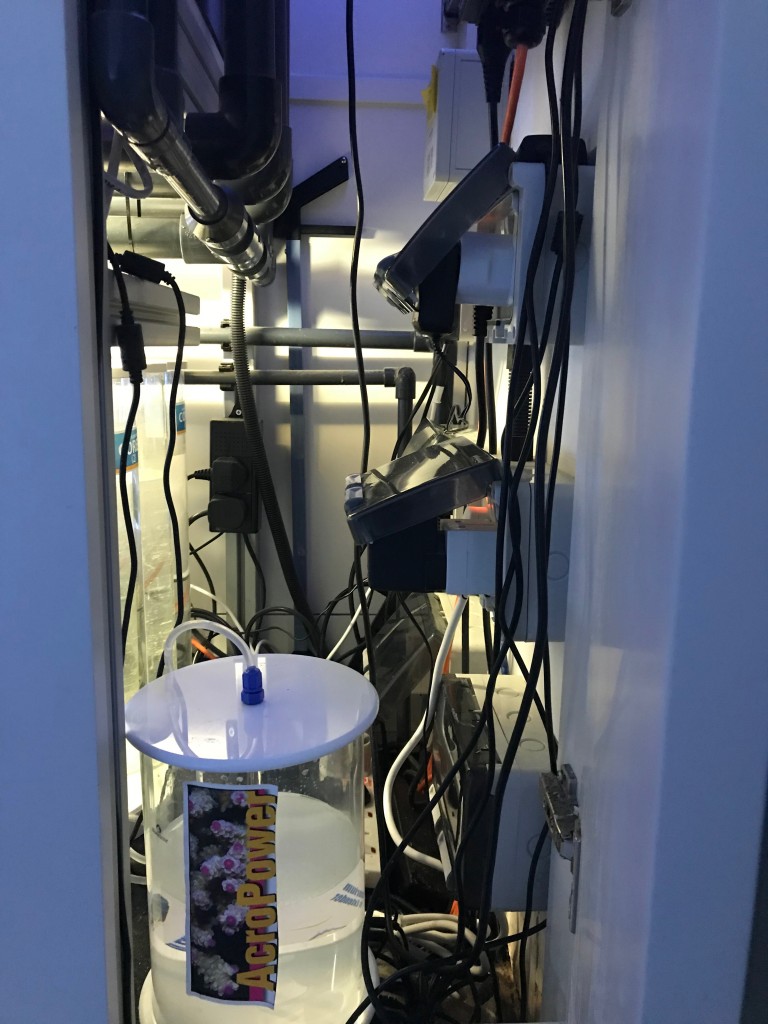
I have debated for many years whether to use an all-in aquarium controller such as a GHL Profilux or a Neptune Apex, but have decided against it for two main reasons.
The first being that for safety reasons I would rather have each main life support system of the tank run on its own power socket, which in turn is connected to its own circuit on a dedicated consumer box I have installed for the tank. If ever one of the fuses trips, all other systems will be unaffected and continue running. Despite the many advantages of being able to automate tasks, and control everything wirelessly, I am just too afraid to have my entire tank rely on a single piece of equipment which could fail.
The other reason is simplicity. I have tried to keep the system as simple and maintenance free as possible, without the need to clean and calibrate probes or other equipment.
I have at one point used a Seneye Reef for monitoring purposes, but even there I started becoming lazy and could not be bothered to soak a new slide for 48hours and change it every month. That said, the new Alk monitoring units which have now come onto the market look very interesting, but I have decided to wait and see how the technology evolves.
The tank is on a very simple feeding schedule of 4-6 cubes of frozen food each day and a mixture of flakes and pellets from different brands fed 3 to 4 times a day. I do not feed the corals anything.
- Clean glass once every couple of days with a flipper magnet
- Empty and clean skimmer cups once a week
- Change AL99 Phosphate Media every 2 weeks
- Change carbon every month
- Test ALK every 2-4 weeks
- ICP test every 1-2 months
- Harvest chaeto in refugium once a month
- Add additional Triton elements as needed depending on ICP tests
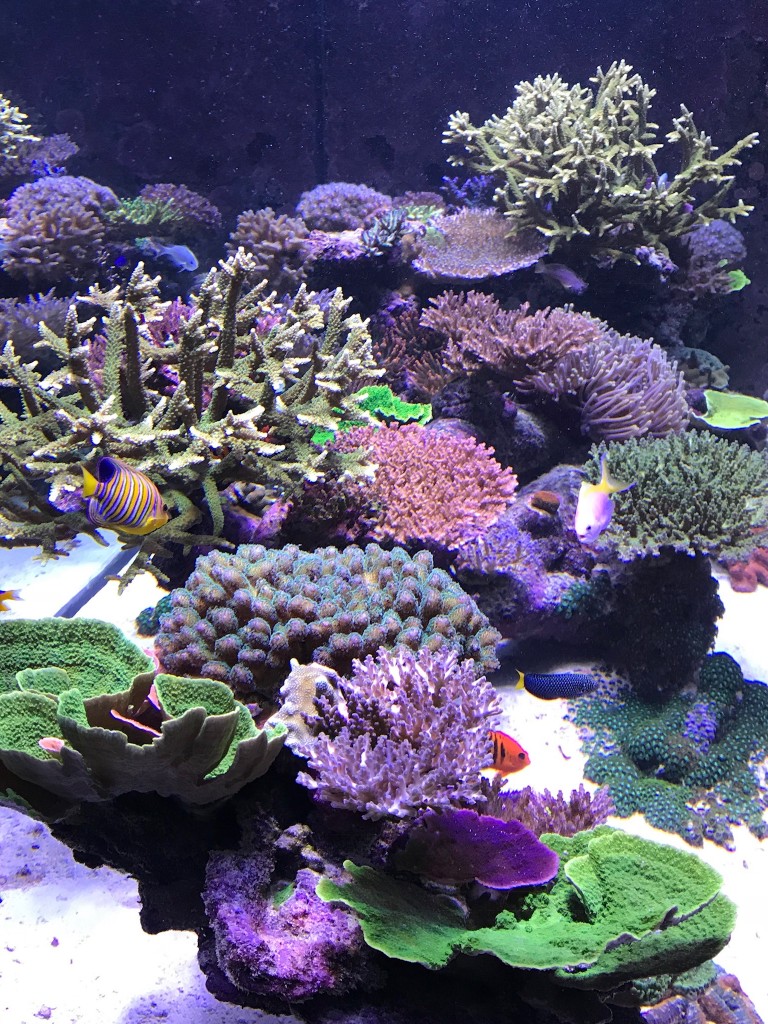

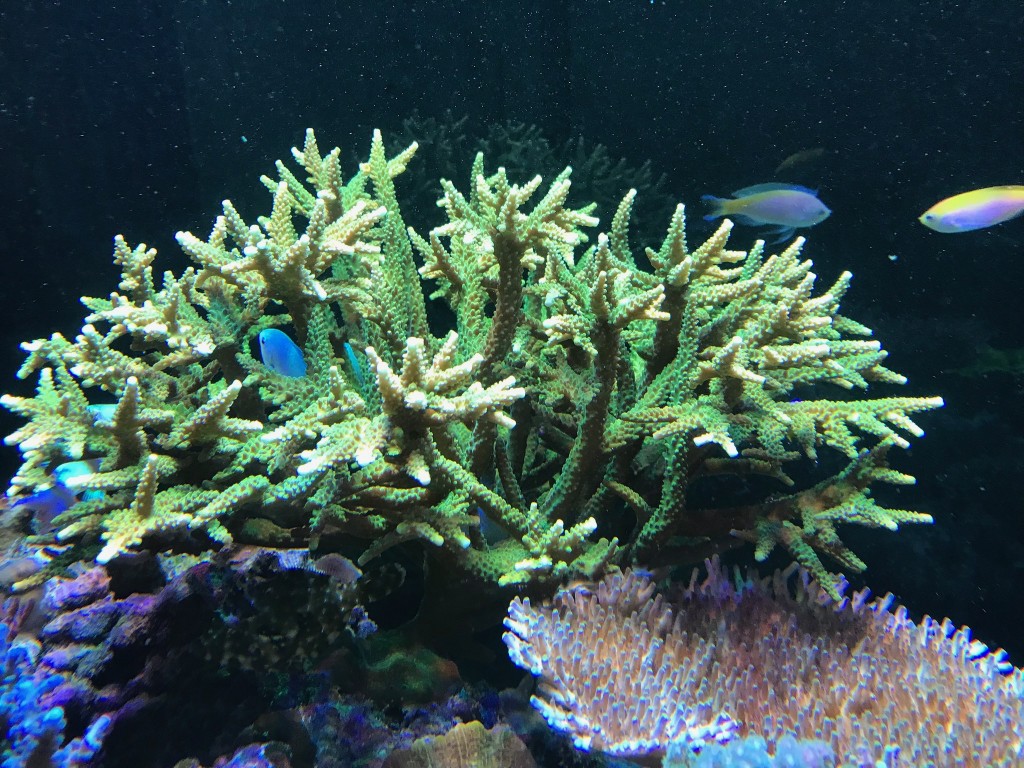
For what it's worth, there are a few important and basic lessons I learned along the way and which I have tried to stick to whilst setting up this tank:
1. ALWAYS dip your corals. Especially after having suffered all kinds of pests known to corals and SPS from red bugs, AEFW, to monti eating nudibranches.
2. Keep your hands out of the tank (easier said than done!). In my last tank I kept maintenance to a minimum and had the tank running for weeks on end without dipping a finger in (partly due to old tank laziness). Ironically the less maintenance coincided with astounding health and growth of corals, as you can see from the almost 3ft wide Seriatopora colony we brought to the Horniman museum.
3. Choose your fish carefully to avoid bickering and bulllying, and keep them fat and healthy, at the risk of over feeding. Touch wood, but I have never lost a fish to white spot, and I believe that has much to do with avoiding stress and keeping them well fed. I also try to keep smaller fish in my tank and am now experimenting with as many pairs as possible to try to recreate their natural behaviour.
4. Set up a power redundancy feature. After having lost a beautiful and mature SPS system during a blackout, I have never run a tank without a battery backup since. In my last tank I ran Tunze power heads with 36ah battery backups. This time I am running my Gyres on specifically made Coral Box backups. If you have Vortechs I highly encourage you to use their battery backups and for other pumps there are easy to put together systems using car batteries and trickle chargers. It's a no-brainer of an investment, especially when thousands of pounds go into a system, but more importantly when we have the moral duty of safeguarding the livelihood of these beautiful living creatures which rely entirely on our care.
5. Try to combat natural pests with natural methods. I have found that often adding chemicals to an established reef risks altering the balance of the ecosystem with unforeseen outcomes. For example the following have worked very well for me over the years:
- Aiptasia with a Copperband butterfly and Klein's butterfly (maybe I was very lucky with a specimen which did not touch any corals)
- Bubble algae with a Foxface fish
- Hair algae with pin cushion urchins and various Blennies
- Asterina starfish with Harlequin Shrimp
Despite all my best intentions, I have had many problems with my current tank, and which sadly have cost me several corals, also some very beautiful and large colonies. Some I have managed to resolve, and others I have just learned to live with. Lets start with the easy ones first and move to the more difficult ones:
1. ALK SWINGS - initially I was experiencing some Alk swings, despite the stability designed in the Core 7 dosing. It didn't take me long to realise that whenever I would change Rowaphos every two weeks, I would experience a slight Alk swing. I resolved this by just using the Triton Aluminium AL99 phosphate remover.
2. IODINE SWINGS - similarly to the Alk swings, I realised I was having real issues keeping my Iodine levels stable when using Vertex Rox 0.8 Activate Carbon, which in my opinion is superb but way too efficient, and which I think could have contributed to the swings. What also didn't help was the use of the Salifert Iodine test kit and the very strong Brightwell Lugol's solution which caused me to overdose significantly on a number of occasions. I have since decided to rely exclusively on ICP tests going forward, and I now dose Tropic Marine Iod, which appers to be a milder form of Lugols.
3. CYANO - I have intermittently had problems with Cyano, usually appearing fairly regularly every 6-8 months. At first I have tried combatting with natural methods by trying to reduce or increase nutrients to try and find the right balance in the Redfield Ratio, but without success. After much deliberation and considerable research, I decided to try out a chemical method using Mycosidol tablets which are produced by Dutch reefing company Colombo. The results were almost immediate within 24 hours, clearing the tank completely, without any adverse effects whatsoever on any of my SPS, LPS and soft corals, and none of my inverts. What I also found great about this product is that you can turn on your skimmers 24 hours after dosing, unlike other chemical methods where for 7-10 days the skimmers tend to overflow like crazy. That said, I am still trying to get to the root of the problem, and hopefully the newly installed Clarisea will help detritus and hence excessive nutrient build-up in the tank, which I suspect is at the heart of the problem.
4. LOW NUTRIENTS - there was a period of time, especially when I first set up the tank that my corals were very pale and just lacked natural brilliance. After starting to feed the fish more heavily and dosing Nyos Coral Nectar I started noticing a considerable improvement in the health of my corals.
5. AEFW - and finally to the most difficult and annoying of all the issues I have dealt with and I have learned to live with. I have had AEFW in my previous tanks and when setting up this tank I took what I thought were the right precautions before adding any new livestock. I dipped everything including SPS, LPS, Soft Corals as well as any algae I have added to the system. Originally just with the new Polyplab Reef Primer, as I had read great things about it and that it is not too harsh on corals. Eventually I moved on to doing a double dip with Reef Primer first (5 minutes) followed by TLF Revive (10 minutes) using the recommended doses. I have found Revive is somewhat better at getting AEFW to dislodge from corals, though not sure it really kills them. Anyway, despite my best intentions, and not having a quarantine set-up nor the time to do it, I eventually ended up with the dreaded AEFW which I first noticed about a year ago. Long story short, and having tried all kinds of in-tank treatments including some of the whackier ones such as Microbe-Lift Herbtana and Wormwood powder (as I had read some promising posts about them on some US forums), I have shifted to a regimen of acceptance and containment which is as follows:
- Regular dosing of KZ Flatworm Stop (as per instructions)
- Dipping of any visibly infected corals with Revive
- Introduction of several wrasse species known to feed on AEFW
- Introduction of peppermint shrimp (which I do see around the corals at night, though not sure they are going after flatworms)
- Maintaining general health and supplementing corals with Nyos Coral Nectar
The tank has thrived despite this issue, and given that I cannot afford a full coral quarantine and fallow regimen, it is the best I have been able to achieve. That said, I still do a fair amount of research on the subject in the hope that one day a miracle in-tank treatment is discovered. I am hoping that the AEFW research currently being undertaken by biologists Kate Rawlinson and Jessica Stella will hopefully yield some results in the near future. They have already published a few interesting scientific research papers on the life cycle of these pests.
As mentioned earlier, I have tried to keep the tank as close as possible to a Great Barrier Reef biotope by choosing fish found in the region. I meticulously researched each fish using the fishbase.org online database and the map feature to make sure I was as accurate as possible. I don't have any specific preferences for fish, apart from schooling fish such as the Chromis, which I think give a very natural look as seen on small reef bommies in the wild. I have also tried to get as many fish pairs as possible to try and give them an environment as close to nature as possible, but that hasn't always worked out.
If there is one fish I am particularly fond of, it's one of my two yellow watchman gobies who has followed me from my previous tank and I have had for about 7 years.
Like many others, I have also jumped into a number of impulse buys that I have come to regret, namely the school of Bartletts Anthias. I started out with 2 males and 4 females and I am now left with one female and 3 males. First of all, the males are contsantly fighting with each other, but not happy with that, they have also started bullying some of the smaller fish in the tank, especially my Chromis which now spend most of their time tucked away in the thick branches of my green staghorns. Secondly, they are not usually found on very shallow water reef bommies and perhaps look a bit unnatural.
I currently have 34 fish, but over time as with my corals, I think I will remove some of them to have fewer species and in larger groups. If I had to do that today it would be as follows:
Remove:
- Bartletts Anthias
- Banana Wrasse
- Hoeven's Wrasse
- Five Lined Cardinalfish
- Purple Dottyback
Add:
- Two additional Yellow Tail Tamarin wrasses
- Five to Six more Black-Axil Chromis
One other observation I would make is that when I first stocked the tank, and unbeknownst to me, I had introduced both regular Green Chromis and the almost identical Black-Axil Chromis. The latter tend to grow slightly larger and develop a more intense colouration, they tend to school better, and also appear more peaceful without killing themselves as often happens with Green Chromis.
One day perhaps I would love to add a pair of Orange Spotted Filefish, a fish I have dreamt of for years, but only once the tank is truly established with very very large colonies.
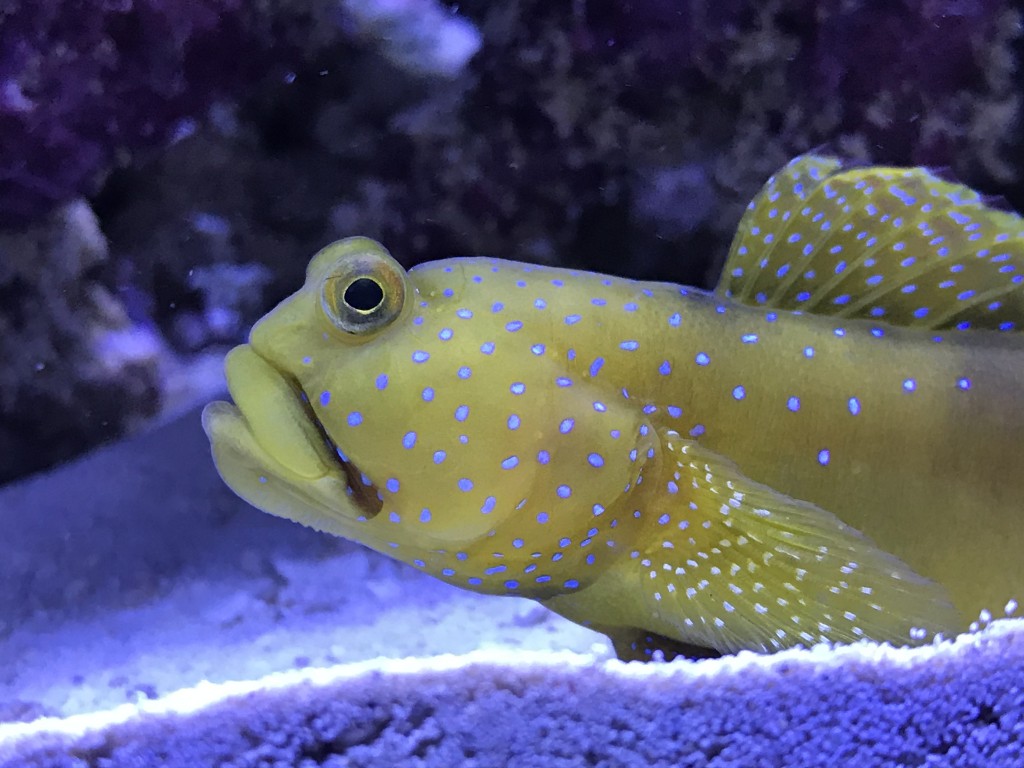
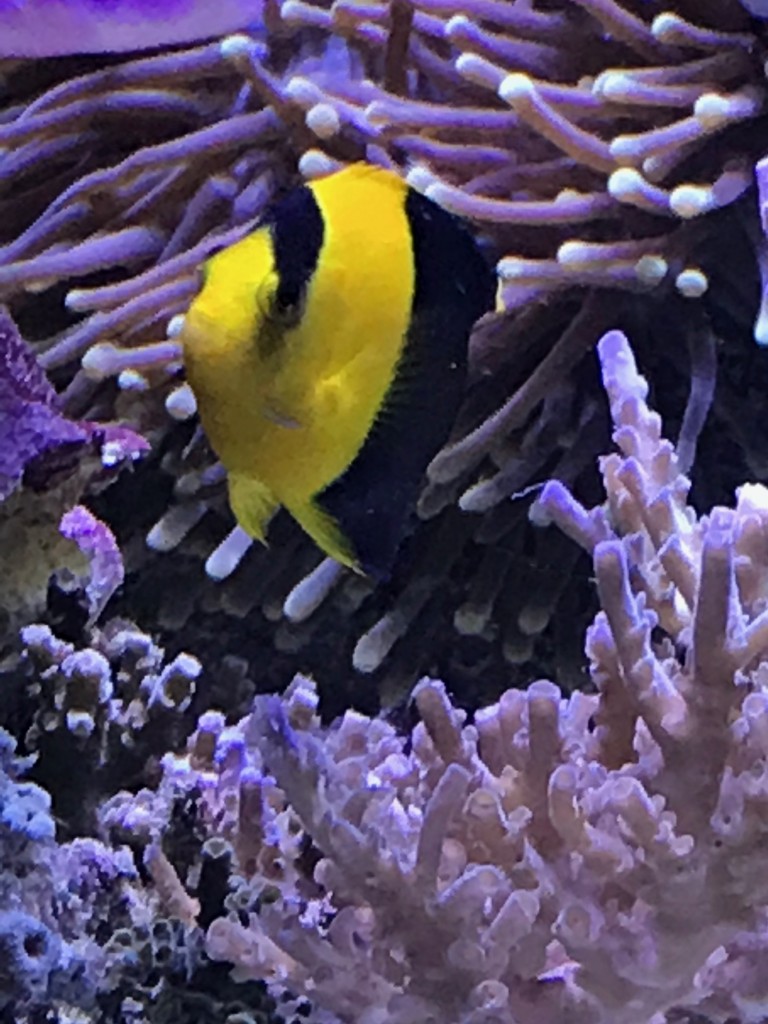
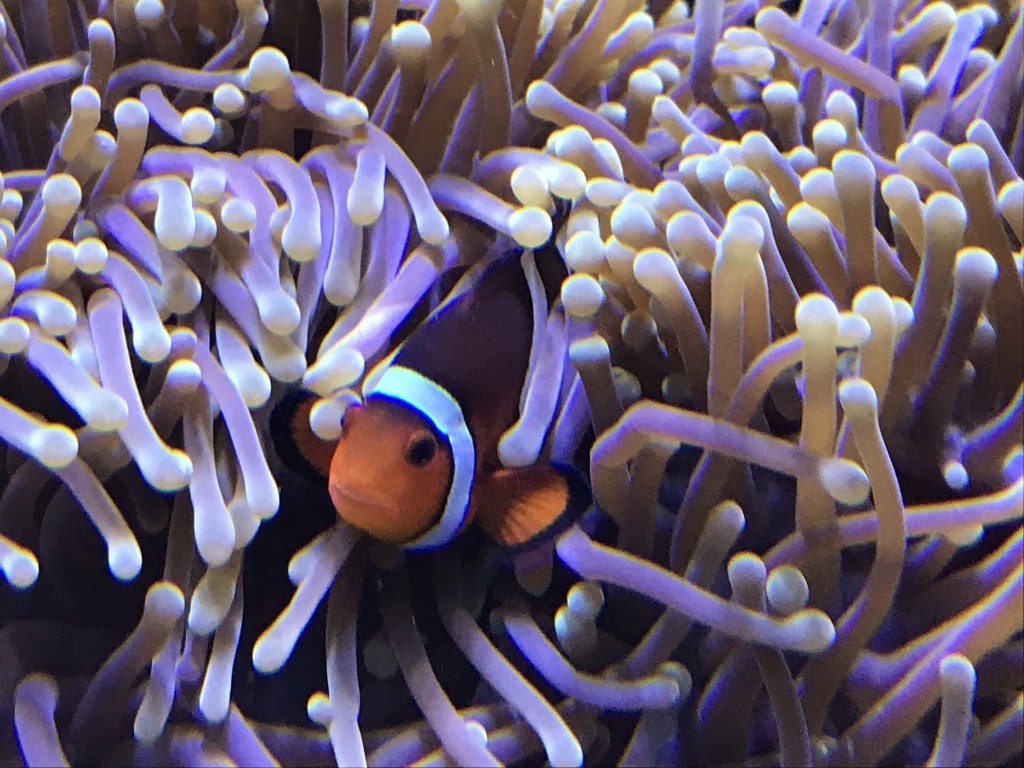
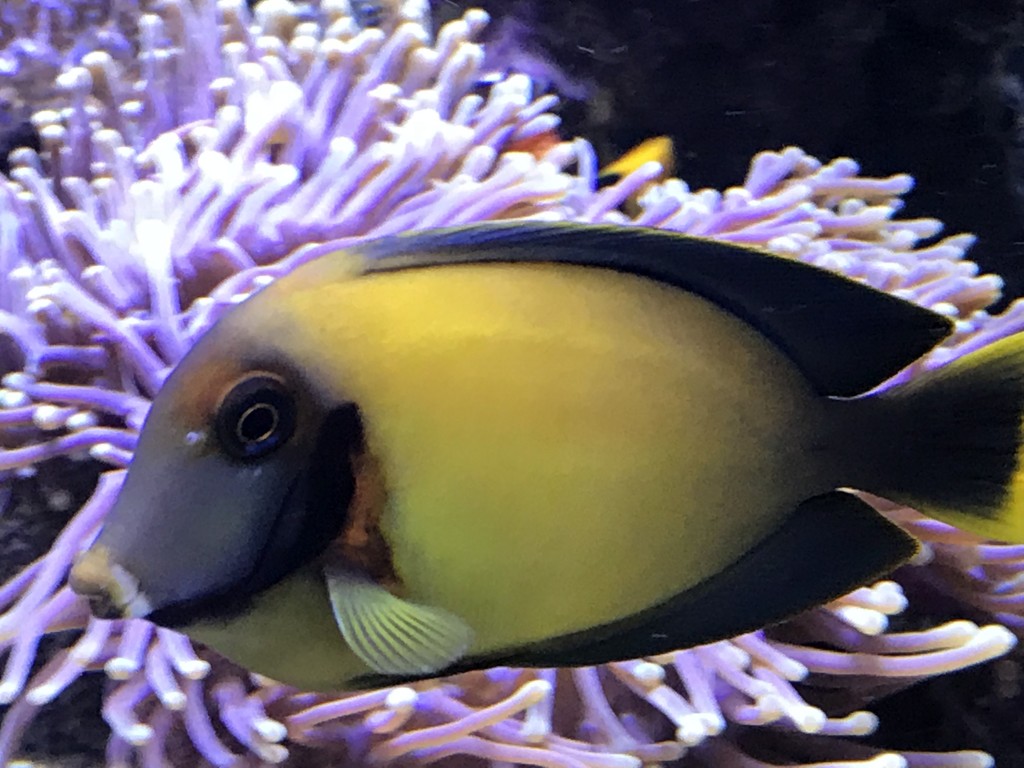
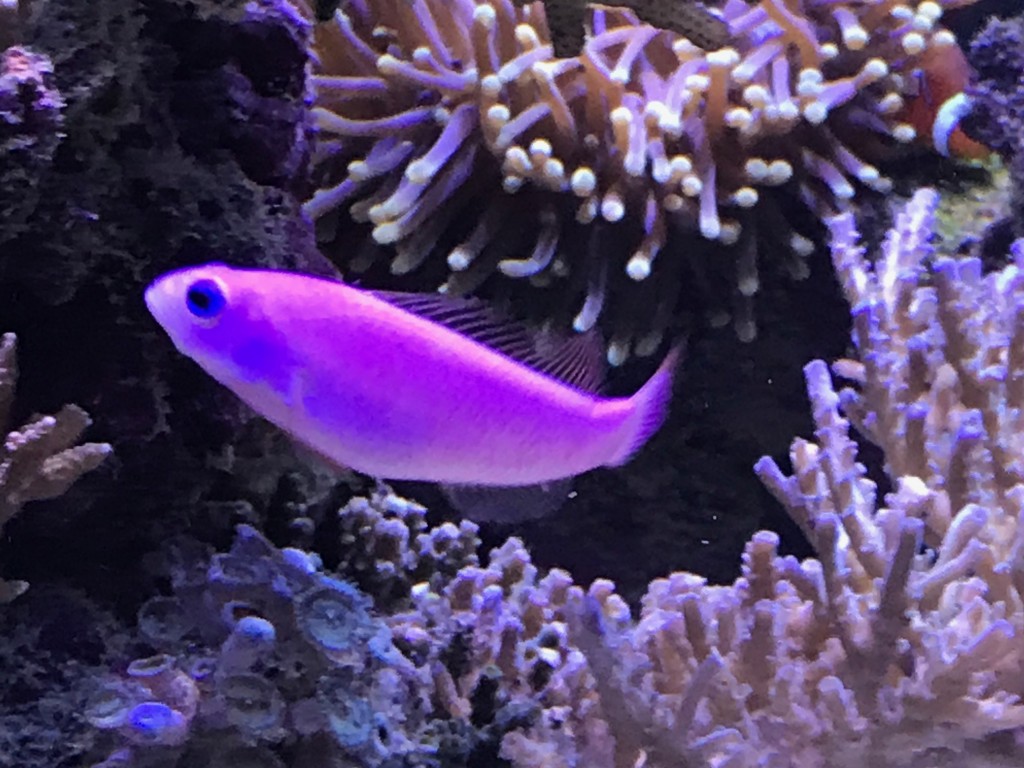
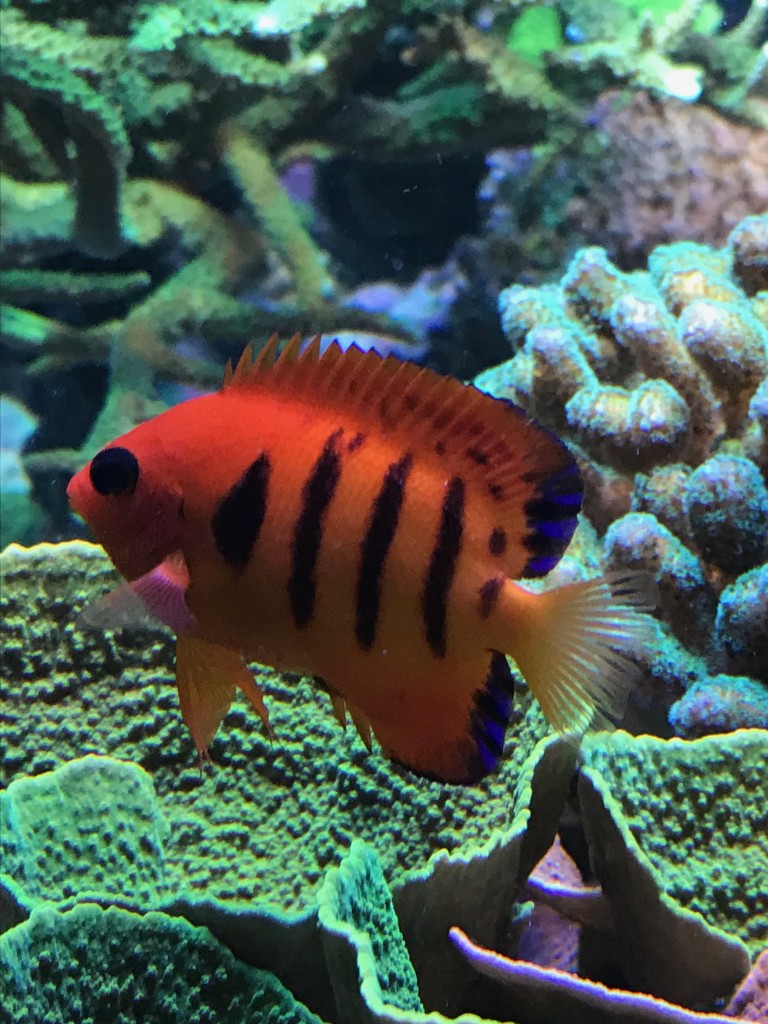
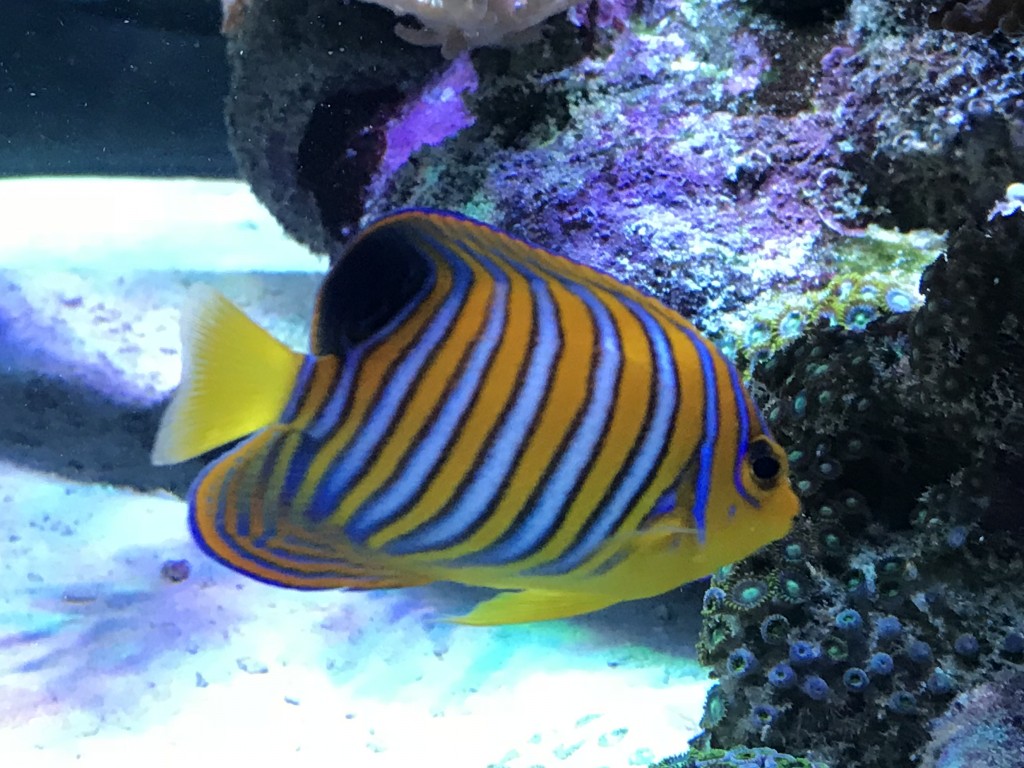
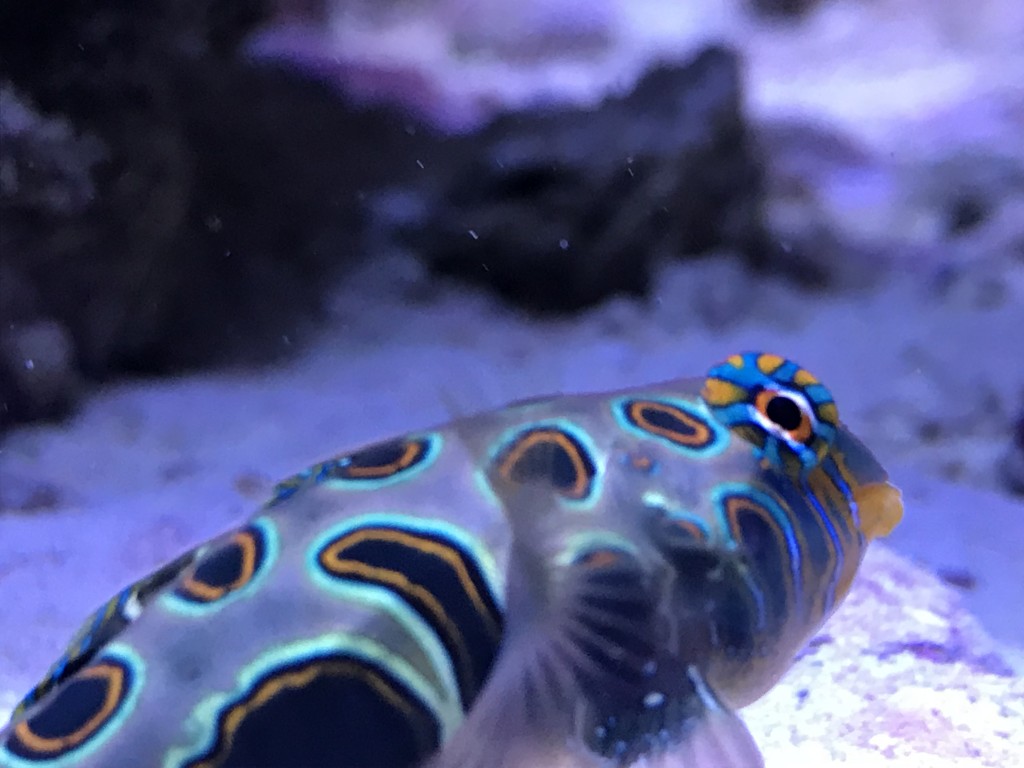
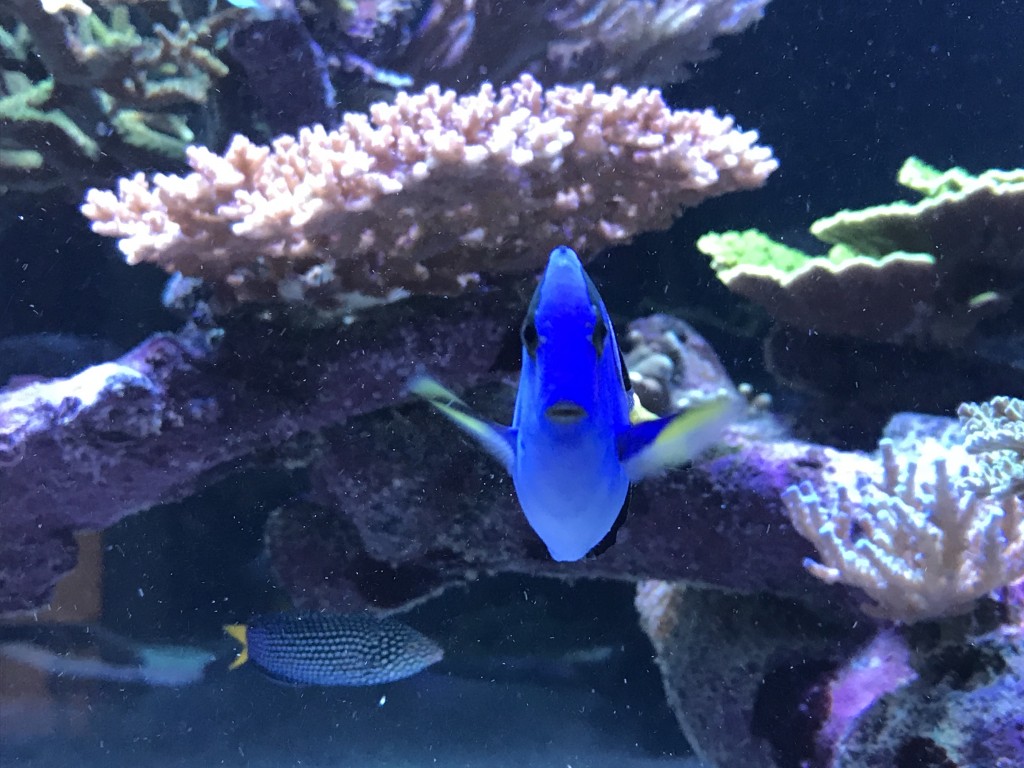
| 2 x Azure Damsel(Chrysiptera Hemicyanea) | 4 x Bartletts Anthias(Pseudanthias Bartlettorum) | Bicolor Angelfish(Centropyge Bicolor) |
| 6 x Black-Axil Chromis(Chromis Atripectoralis) | 4 x Common Clownfish(Amphiprion Ocellaris) | 2 x Five Lined Cardinalfish(Cheilodipterus Quinquelineatus) |
| 2 x Flame Angelfish(Centropyge Loricula) | Foxface(Siganus Vulpinus) | Hoeven's Wrasse(Halichoeres Melanurus) |
| Matted Filefish(Acreichthys Tomentosus) | Mimic Tang(Acanthurus Pyroferus) | Purple Dottyback(Pseudochromis Porphyreus) |
| Regal Angel (Pygoplites Diacanthus) | Regal Tang(Paracanthurus Hepatus) | Starry Blenny(Salarias Ramosus) |
| 2 x Yellow Watchman Goby(Cryptocentrus Cinctus) | Yellow Wrasse (Halichoeres Chrysus) | Yellowtail Tamarin Wrasse(Anampses Meleagrides) |
As mentioned earlier, I have tried to recreate as much as possible an Australian Reef biotope, and that includes the choice of corals. Again, this was done through a lot of research using mainly the Australian Institute of Marine Science and Corals of The World online databases with very good geographic distribution maps for each species. I have about 30+ coral species in the tank, which over time I am looking to reduce as the colonies continue growing, in order to create a more natural look. I have also tried (as far as possible...) to limit myself to shallow water species, again to maintain a more natural and accurate look. This is something I have achieved quite successfully in my old tank (a Maldivian Biotope), which you can see in a picture below. Anyway, the corals are pretty straightforward SPS and LPS, with no real "designer" or particularly rare corals. A partial list includes the following species:
SPS:
- Montipora Capricornis (Purple, Green, and Orange )
- Acropora Granulosa
- Acropora Efflorescens
- Acropora Vermiculata
- Acropora Prostrata
- Acropra Tenuis (Blue and Green)
- Acropora Undata
- Pocillipora Damicornis (Green/Purple and Purple)
- Stylophora Pistillata
- Seriatopora Sp. (Bird of Paradise)
- Acropora Microlados
- Montipora Digitata (Red)
- Porites Sp. (Yellow)
- Montipora Monasteriata
- Montipora Danae
- Montipora Setosa (yes this one is not from Australia, but couldn't resist)
LPS:
- Lobophyllia Sp. (various types/colours)
- Fungia Sp. (Purple)
- Platygyra Sp.
- Favites sp.
- Diploastrea Sp.
Soft Corals:
- Zoanthus Sp. (various colours)
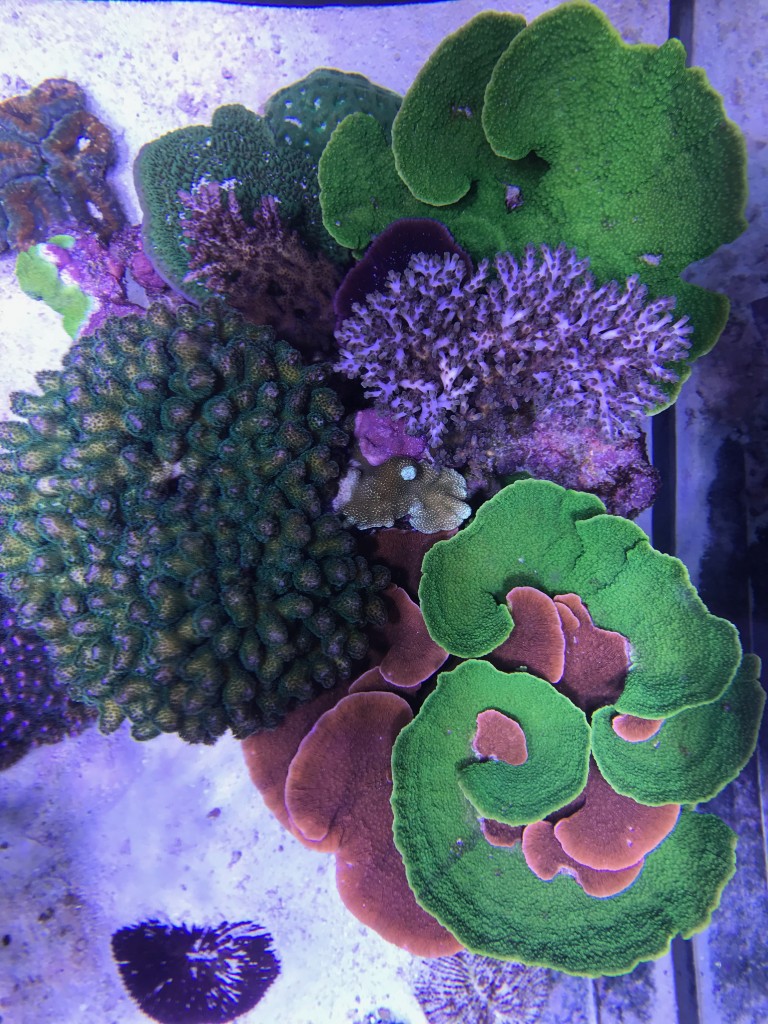

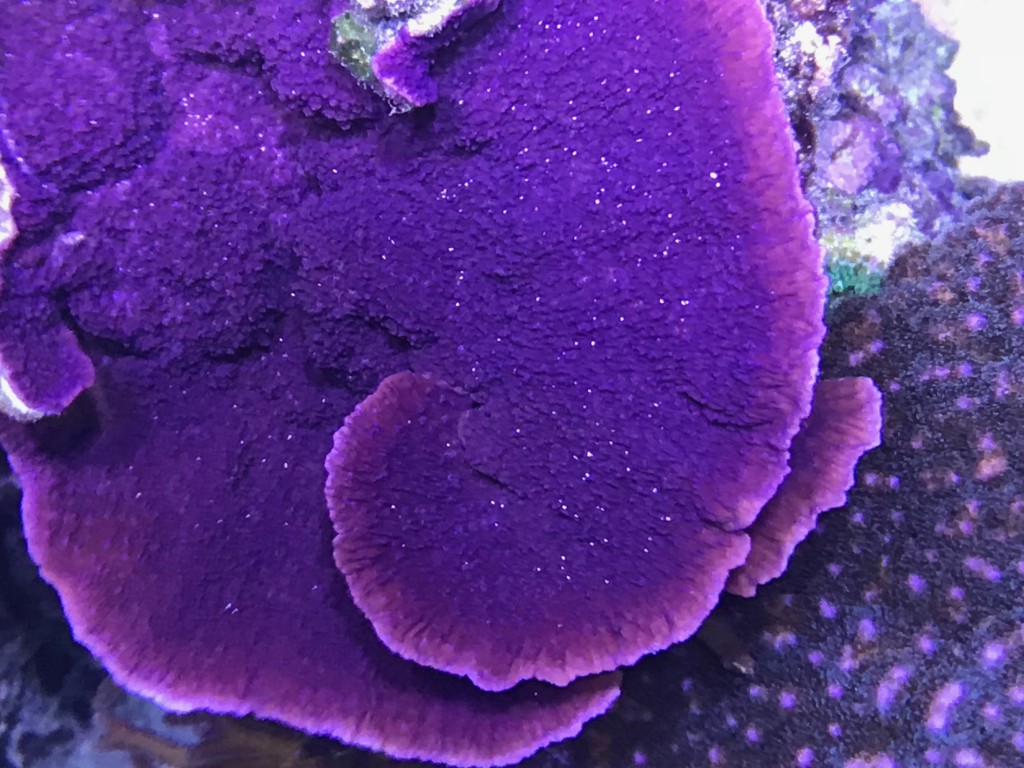
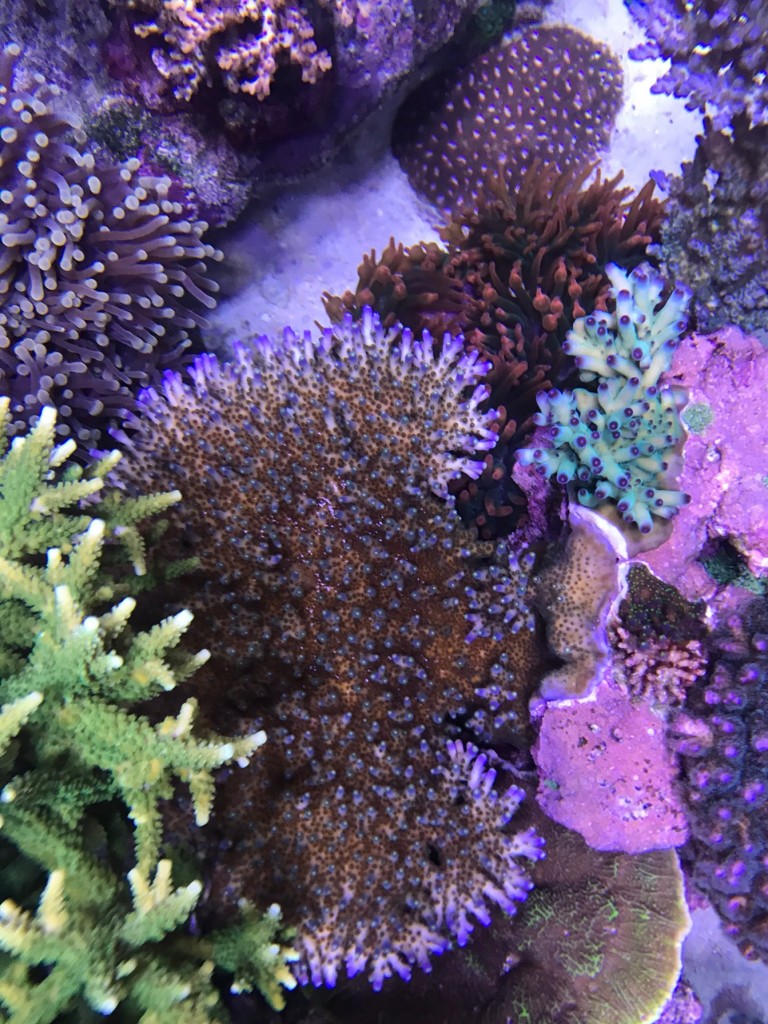
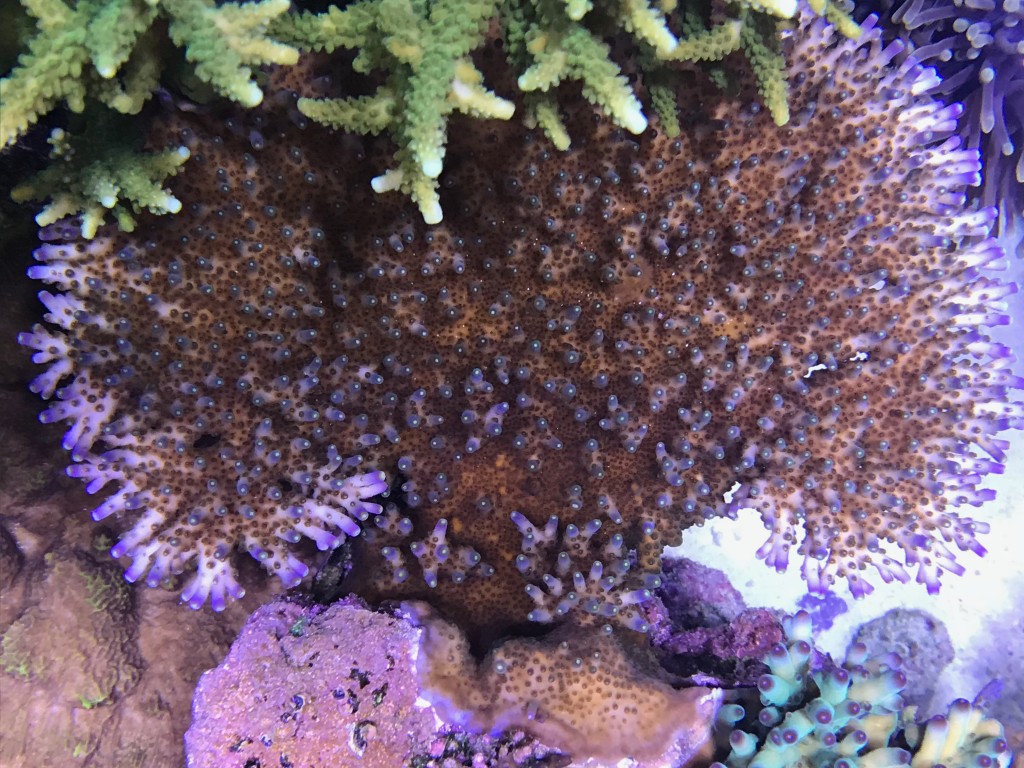
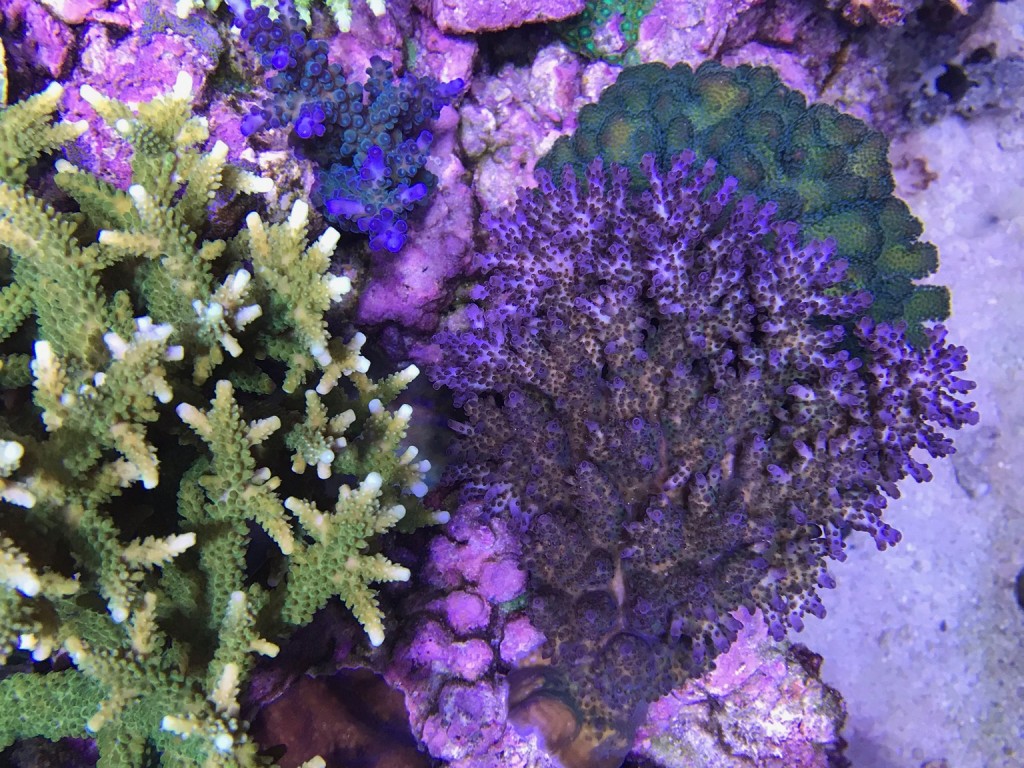
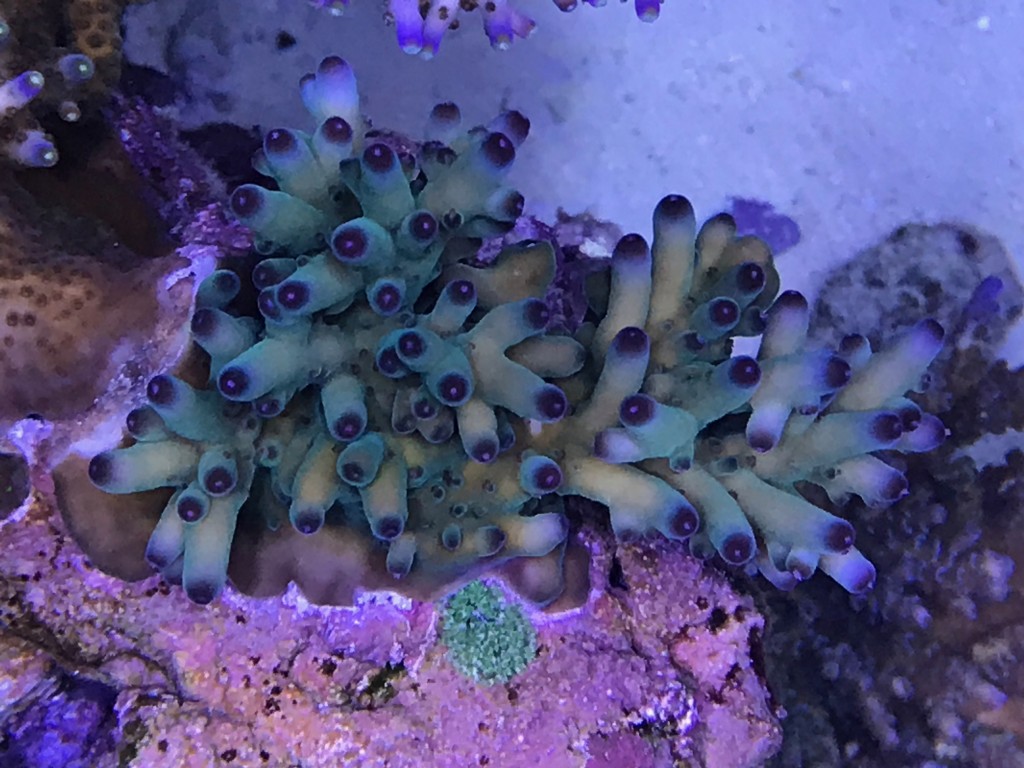
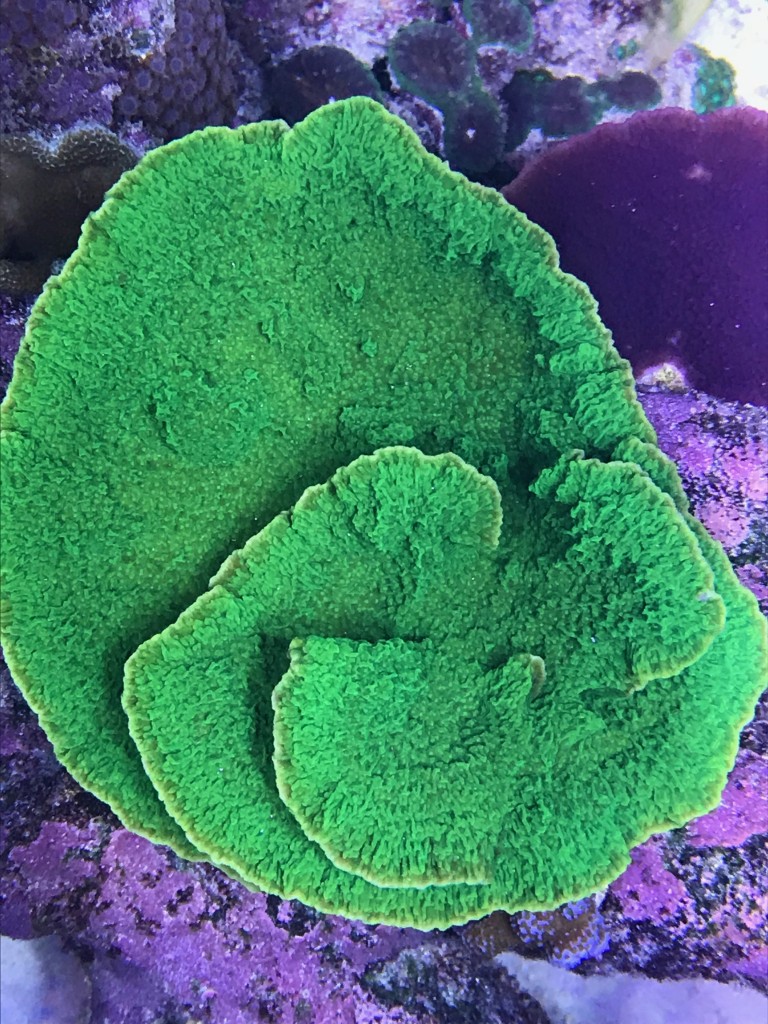

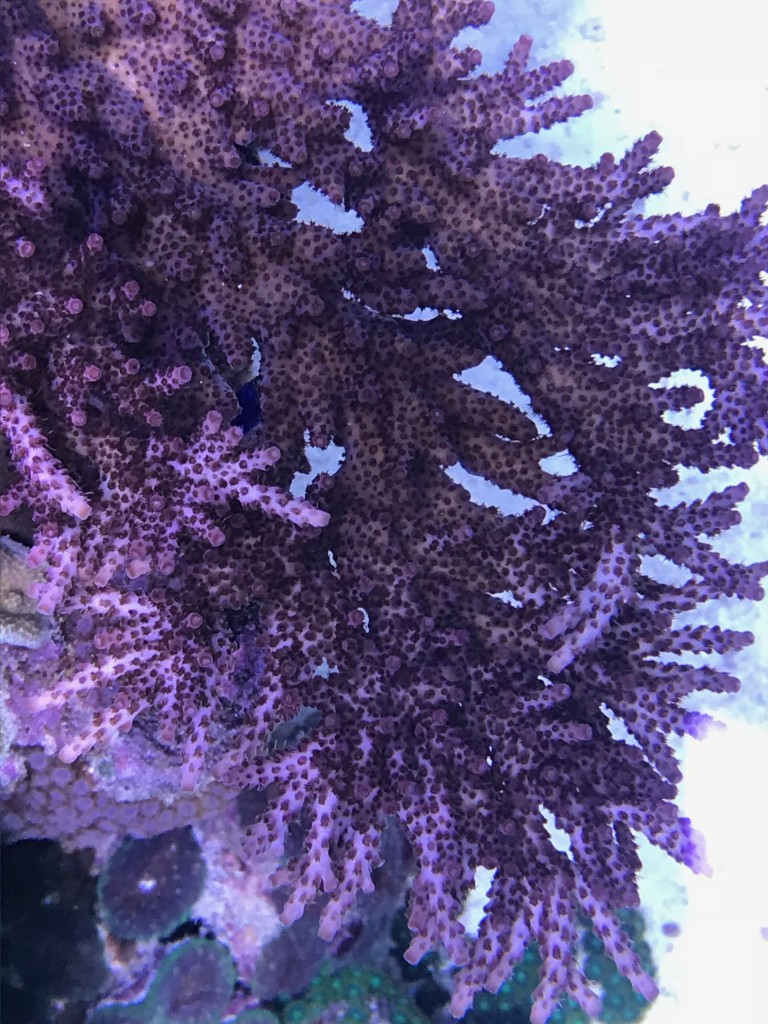
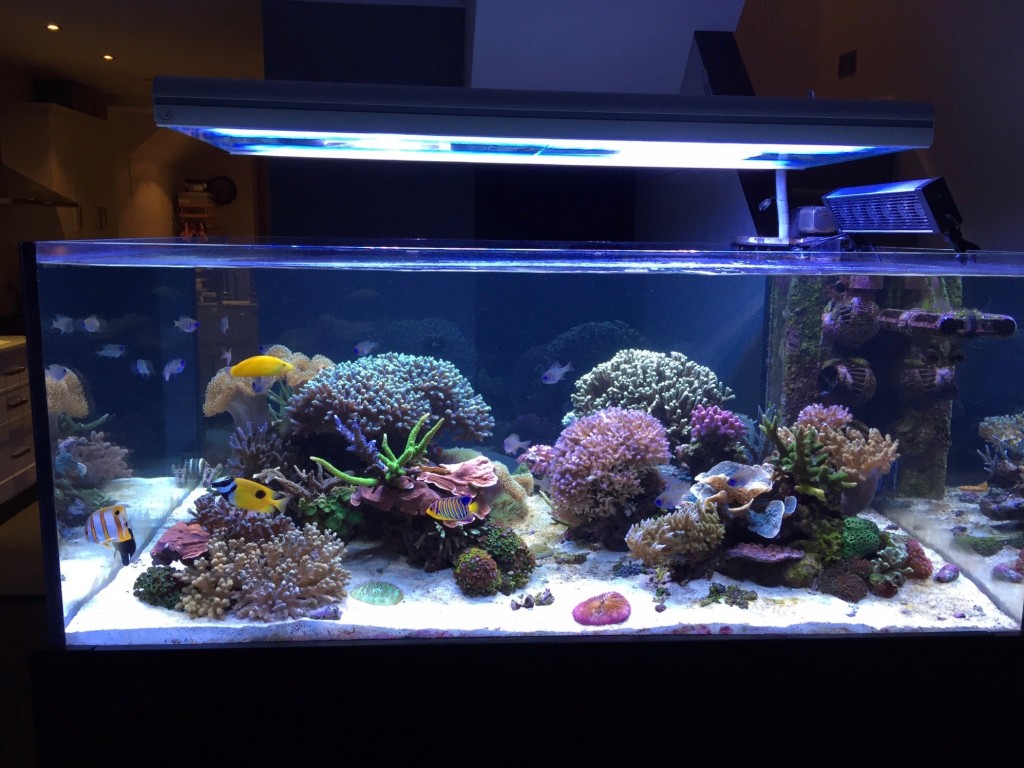
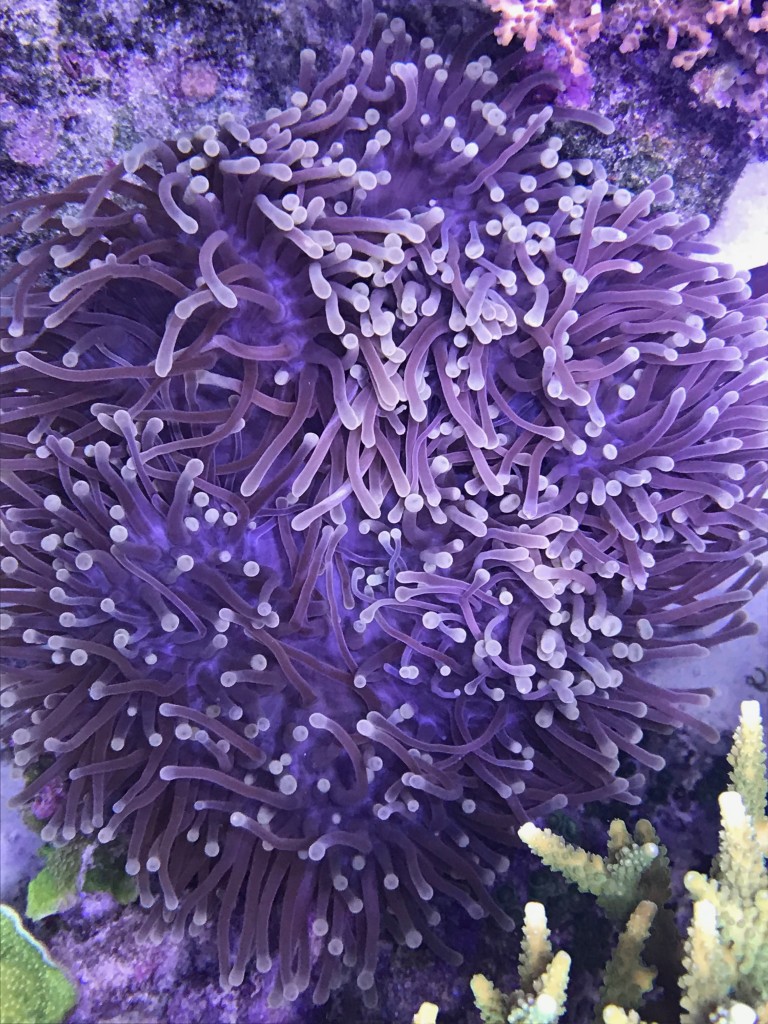
My pride and joy is my purple based and yellow/orange tentacled Ritteri anemone. I have had it for about a year and it has settled in a great spot, does not move around, and is the home of two of my clownfish. As I do not feed it, it has also not grown that much which has worked very well.
In my main tank I also have a blue linkia starfish, a cleaner shrimp, a few peppermint shrimp (to fight aiptasia and AEFW) and various snails as part of my clean-up crew. I have also noticed a large hitch-hiker mithrax crab one night but he seems pretty well behaved. In the sump I now have a huge colony of asterina starfish (which have yet to make it to the main tank) and a whole bunch of small feather duster worms which have colonised the top of my Abyzz return pump.
There is not much I can add, apart from the fact that reefing is, and has always been a part of my life, and I am constantly fascinated by this beautiful hobby and by the sea. I hope that in time the hobby may continue to provide useful reef conservation practices by promoting sustainable collection methods which have a far reaching and positive impact on local communities, as well as helping fight increasing bleaching occurrences through the selective breeding and seeding of more climate resistant coral species.
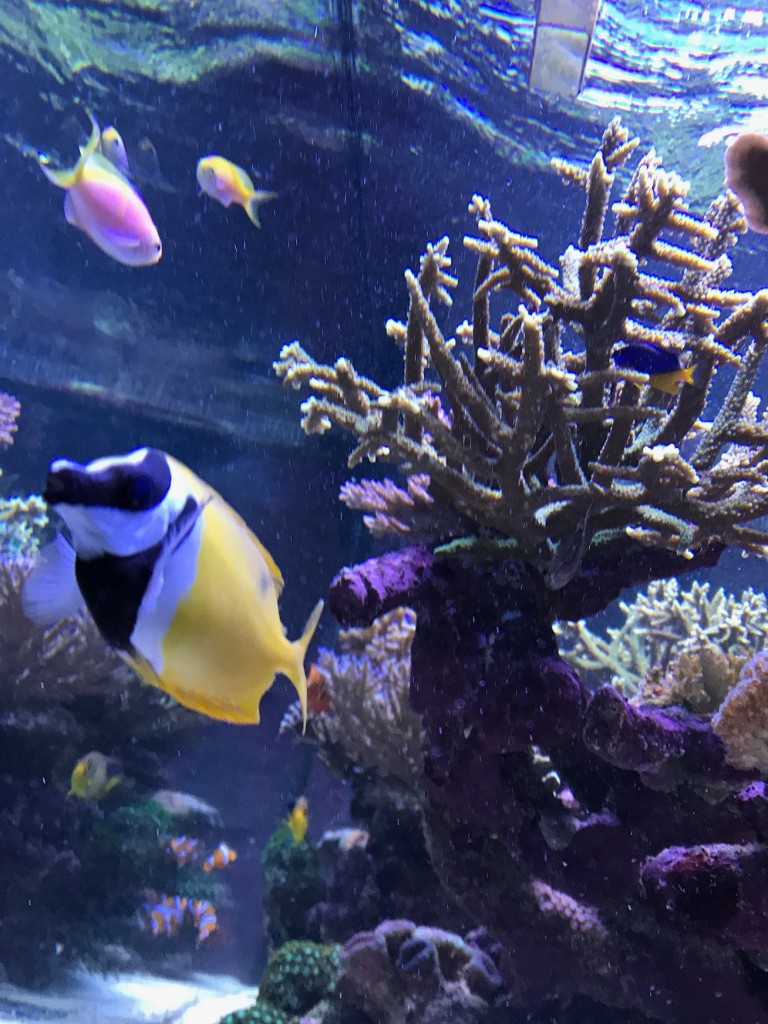
As mentioned previously, without my parents I would never have been introduced to such a wonderful hobby, and every time I gaze into my tank I have a special thought for my late father who patiently accompanied me on numerous LFS trips as a child, and always kept a keen interest in my tanks all the way through adulthood.
I would also include my partner who has patiently put up with my reefing addiction (even though she is now developing an interest herself...) and my two year old who is on his way to becoming a reefer himself, judging by how fascinated he is by the tank, and always wanting to get his hands in there when I'm doing maintenance. In fact, two of the pictures in this article were taken by him while he was playing around with my iPhone and trying to copy me taking photos of the tank. Lets see if you can guess which ones...
Over the years I have also come to know a number of the well known retailers around London, many of which have also been incredibly helpful and kind to me with their wisdom and patience, some have become friends, and have always been available to go above and beyond to help out. Special mentions go to Thomas and Vince at Aquarium Connections who have been instrumental in this tank, Mahboob at Aquatic Design Centre, and Hammant at Tropicals and Marines (sadly the shop is now closed). I also buy a number of goods online through H2O and Charterhouse as they offer an impeccable service, and I have made a few trips to AAC and Reef Depot who have an incredible selection of corals.
Lastly, all of you on this forum, as you have been an invaluable source of information and help over so many years.
Ultimate Reef

Ultimate Reef

System
Sump: 55 x 28 x 15 inches (140 x 71 x 38cm)
Tank Volume: 1200 litres (264 gal)
System Volume: 1400 litres (308 gal)
Water Parameters
Equipment
Lighting: 6 x Angel A1P Led
Media Reactors: 2 x Ultra Reef UF003
Return Pump: Abyzz A400
Power Geads: 2 x Maxspect Gyre 250 & 1 x Tunze Turbelle 6255
Doser: GHL Doser 2.1
Heaters: 2 x Schego 600W
Chiller: Teco TK2000
Auto Top-up: Tunze Osmolator
Temp Control: Simply Aquaria Dual Temp Control
UV: Trop Tronic 55W